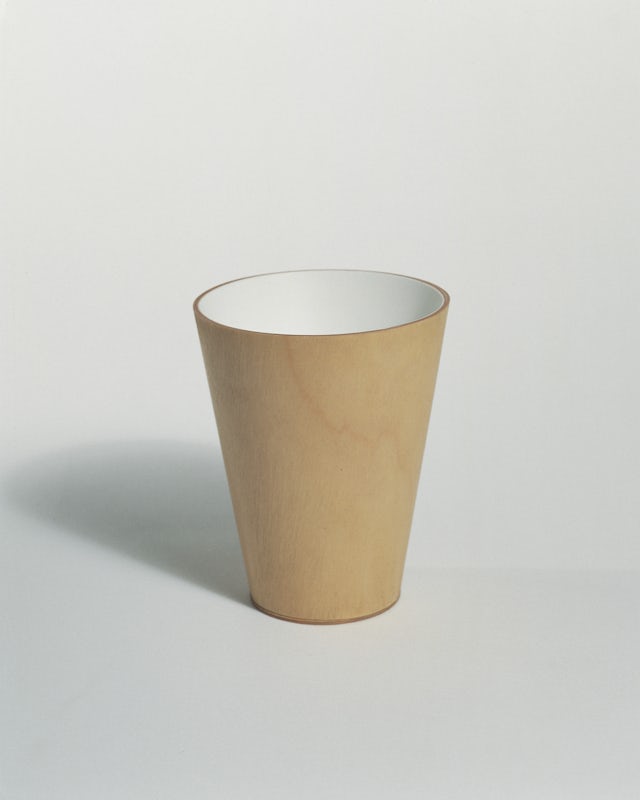Archive
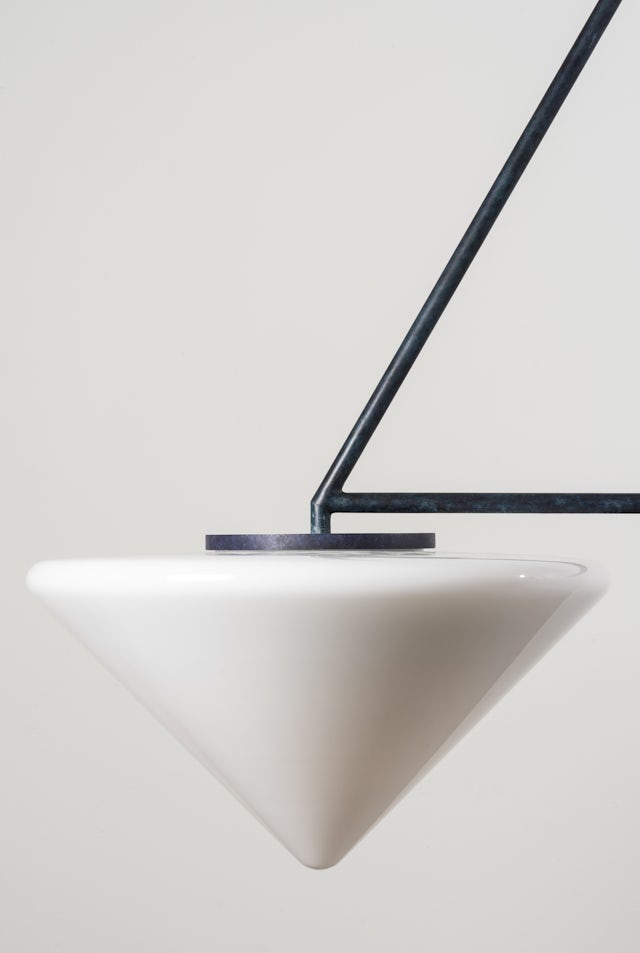
2019
Future Light Cone
If one imagines light confined to a two-dimensional plane, then the light from a flash spreads out in a circle after the event occurs. If we chart the growing circle of this flash through a vertical axis of a graph representing time, the resulting shape would be a cone – known as the future light cone.
The collection started as an exercise to develop a large-scale lantern, inspired by the oversized outdoor fixtures that dominate many historic public houses in Britain. Although these lanterns are mostly traditional in form, the aim was to create a design that reduced the idea to its most basic shape. This resulted in conical, mouth-blown opaline glass supported by an elaborate hanging structure made of brass tubes arranged in triangular configurations. Finished in a blue brass patina, the collection comprises pendants, sconces and table lamps.

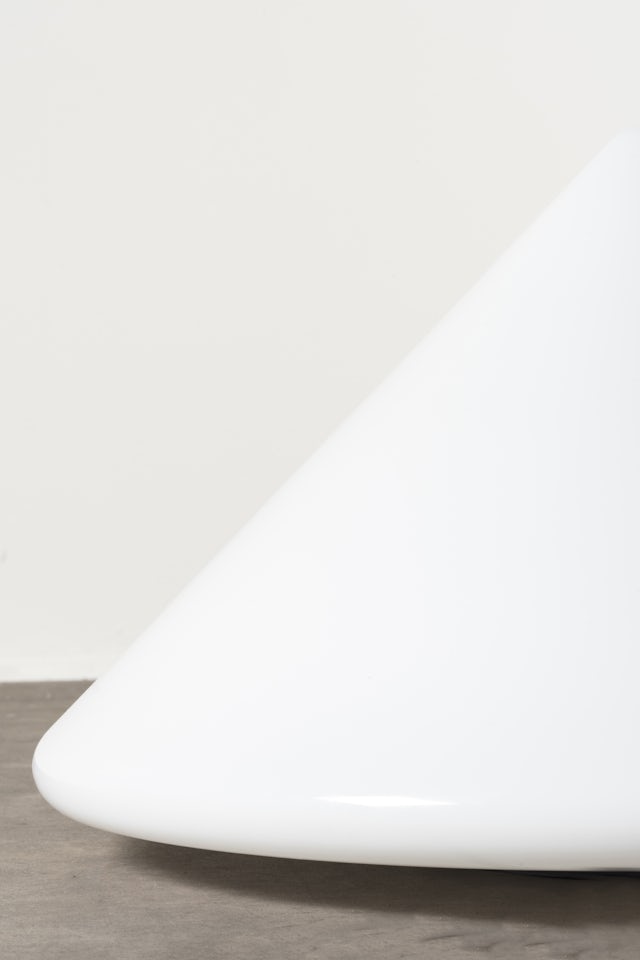
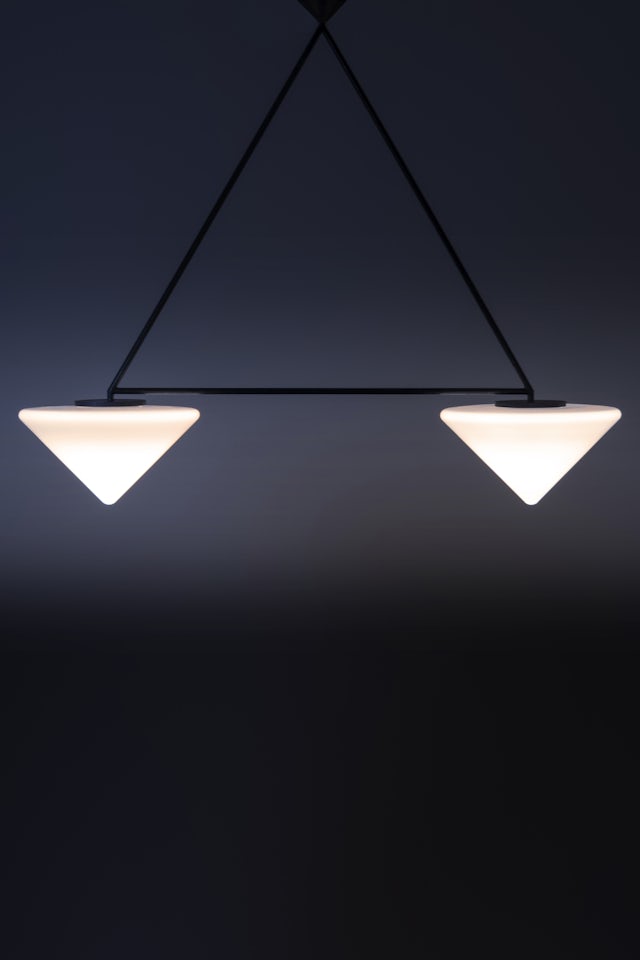
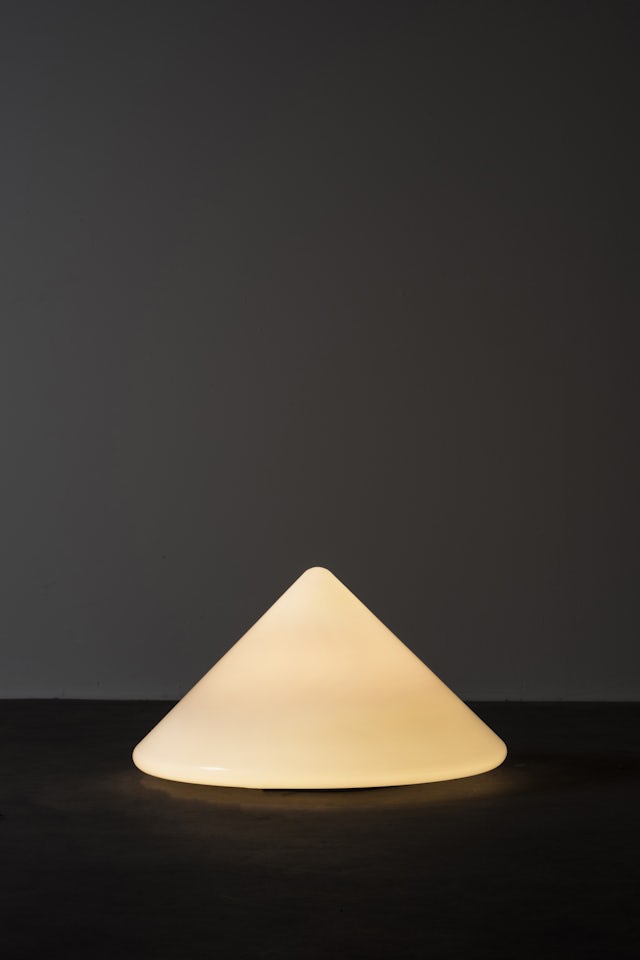
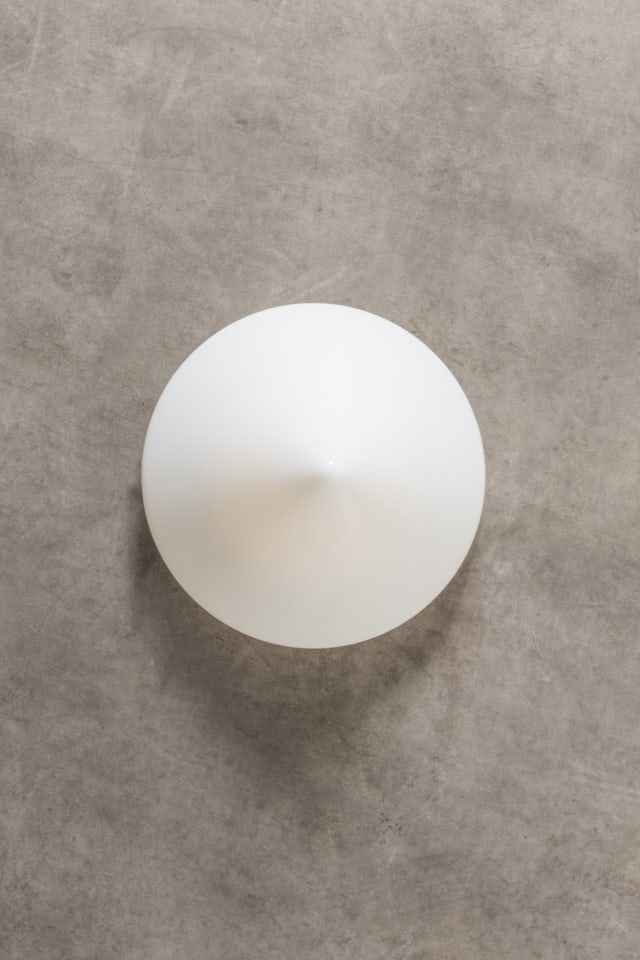



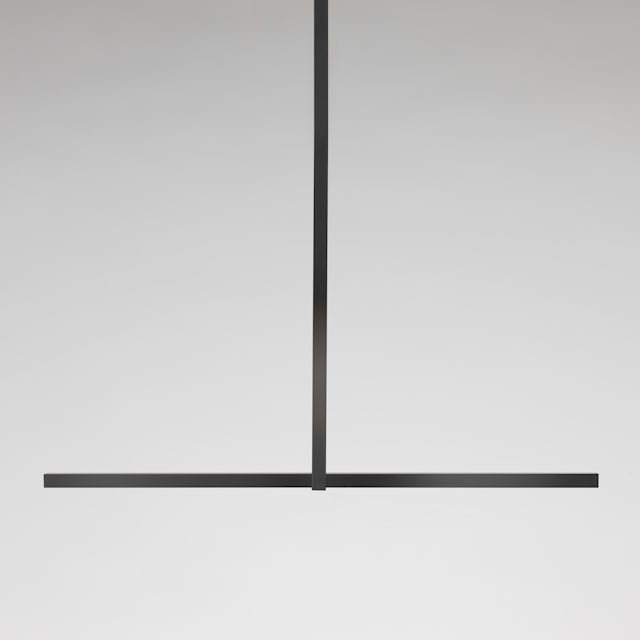
2019
Vertigo
Vertigo is a pendant light formed of two elements: a simple horizontal beam with a linear array of LED light acts as an up and downlighter, with a vertical strap that holds the fixture in balance. It is this simple attachment, suggesting the hoisting of a structural beam, that evokes the iconic images of the steel construction of skyscrapers in 1930s New York City captured by photographer Charles C. Ebbets.
There is no separate ceiling rose – the driver is fully integrated into the structure of the pendant and the two pendant rods carry the electrical current, removing any need for wires that might visually obstruct the design. The light intelligently operates through a touch-sensitive dimmer in the middle of the horizontal beam.
Vertigo is produced in aluminium, powder coated in either black or white. It is available in two length options – 1.5m and 2m – and there are multiple drop lengths to choose from, covering all possible requirements.

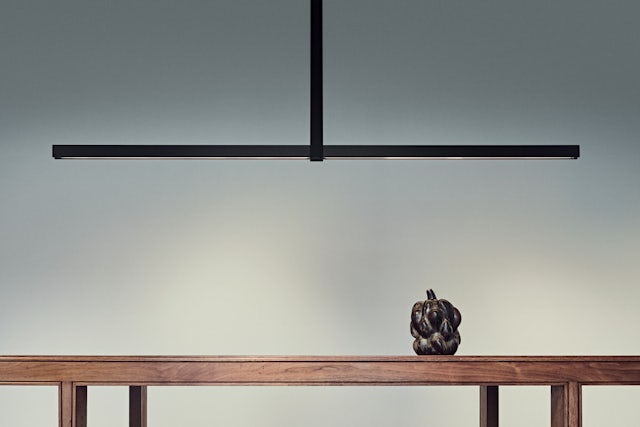
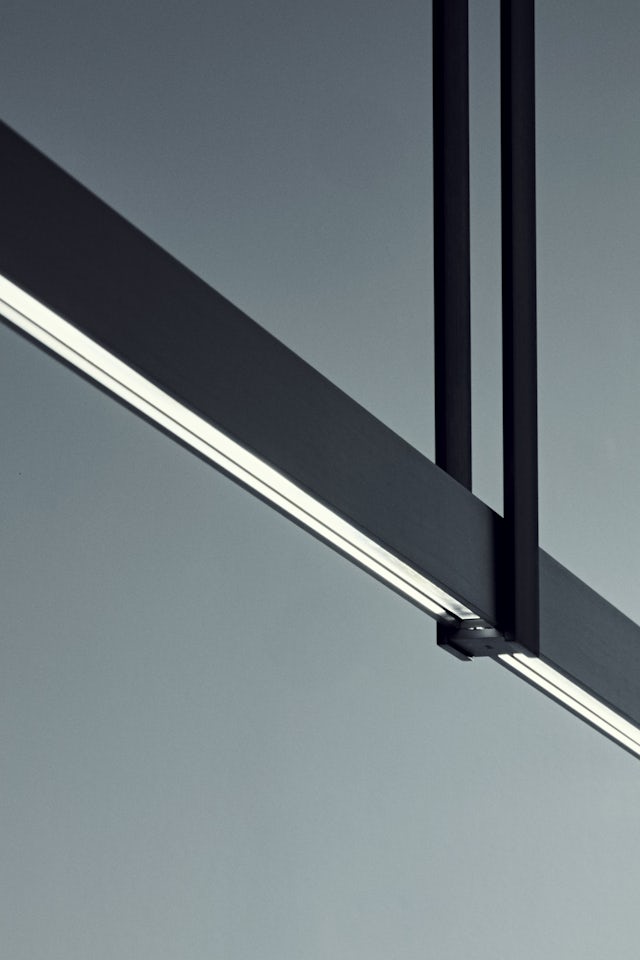
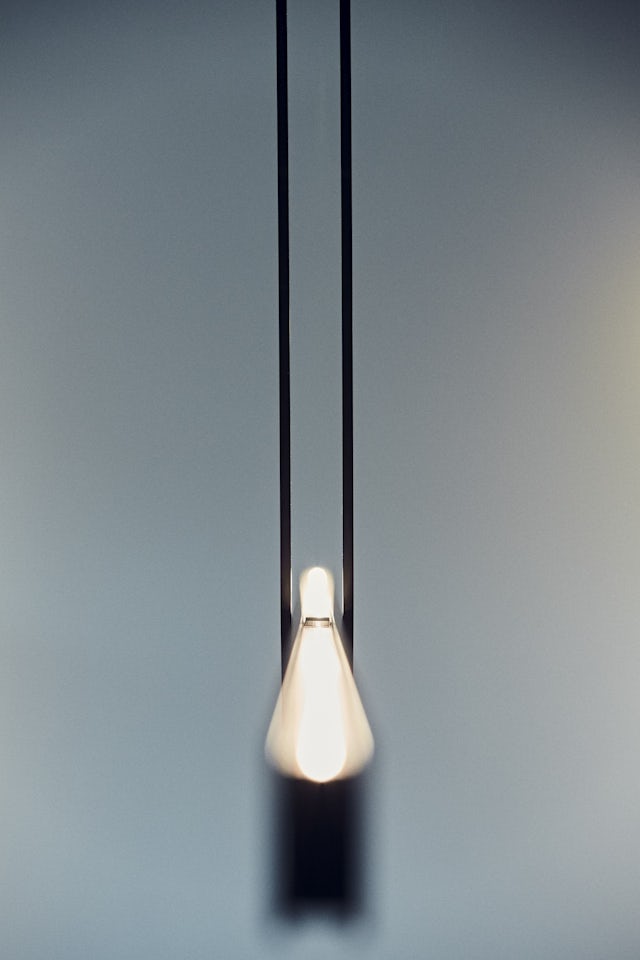
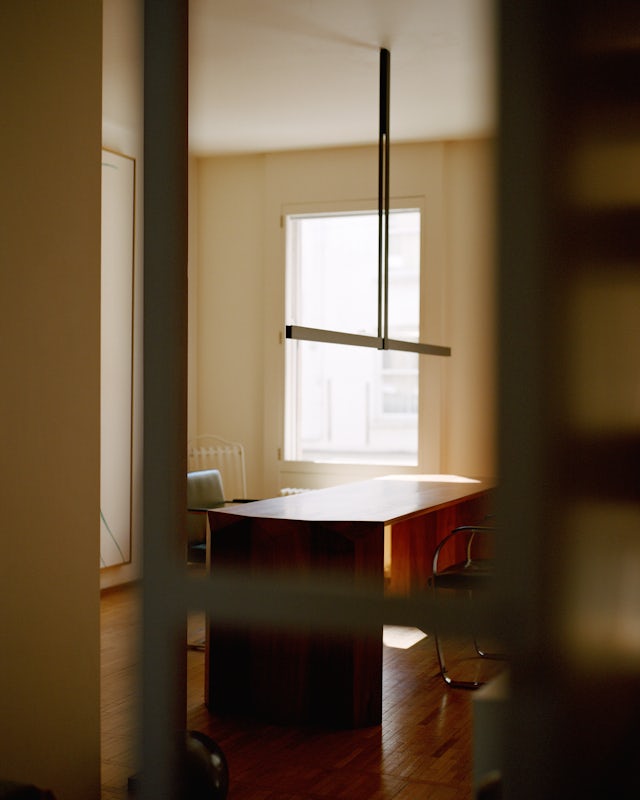
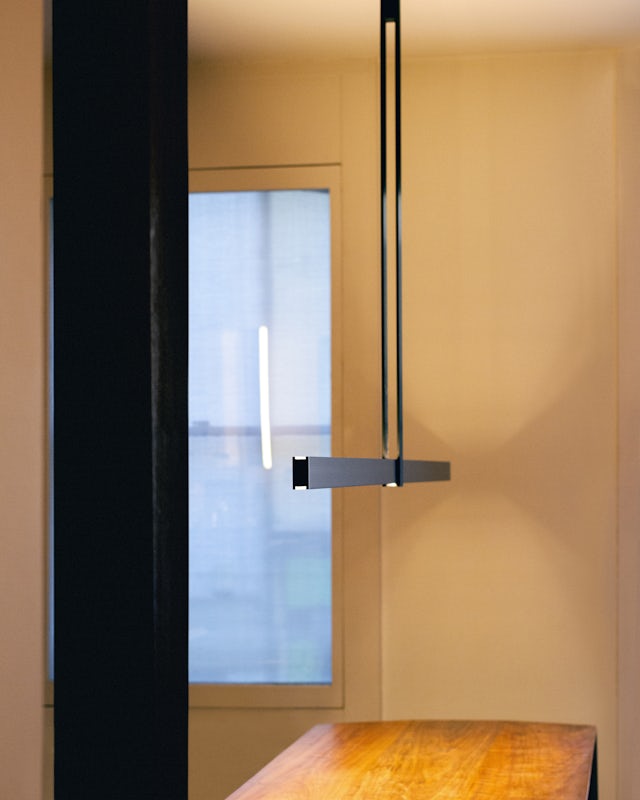


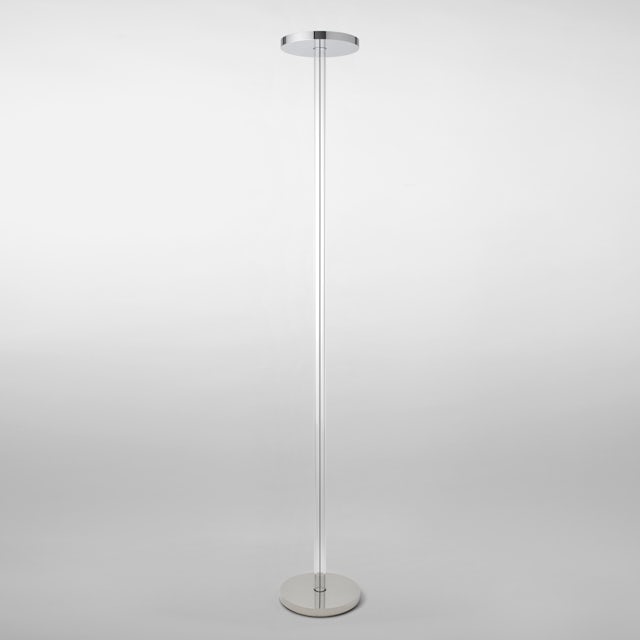
2019
In Between
In Between is a powerful, fully dimmable uplighter consisting of two identical aluminium discs separated by a transparent glass tube. The upper disc appears to be floating as it elegantly projects the light upwards. Running along the middle of the tube is a thin cable that expresses the power source of the light – a subtle reference to the famous Bauhaus table lamp designed by Wilhelm Wagenfeld in 1924.

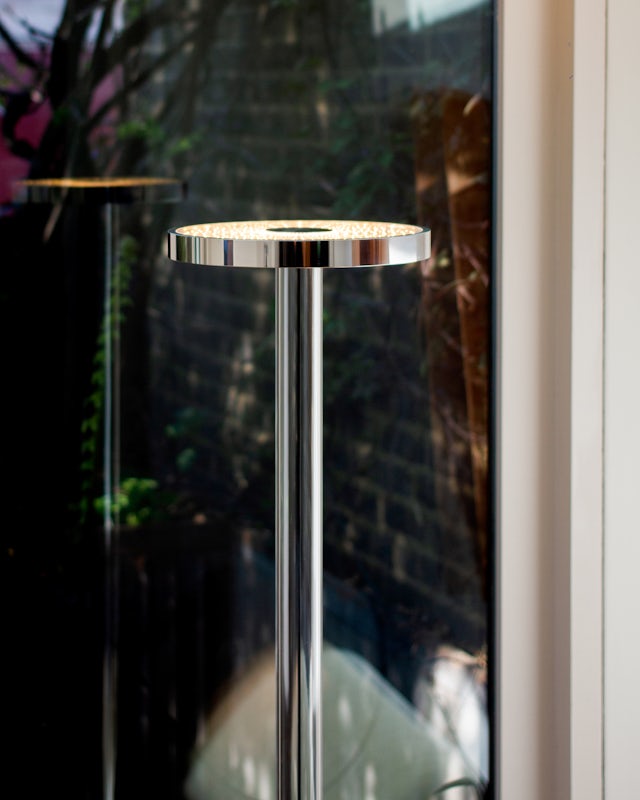

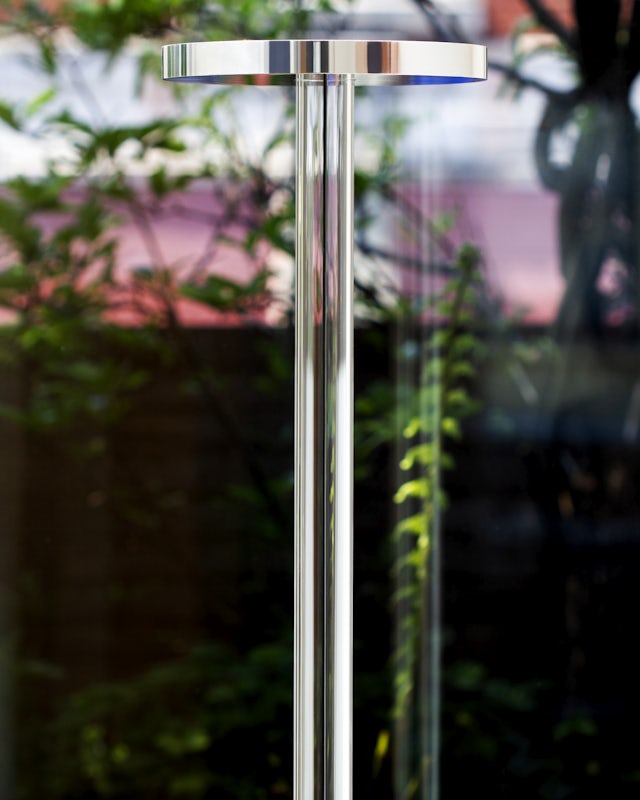


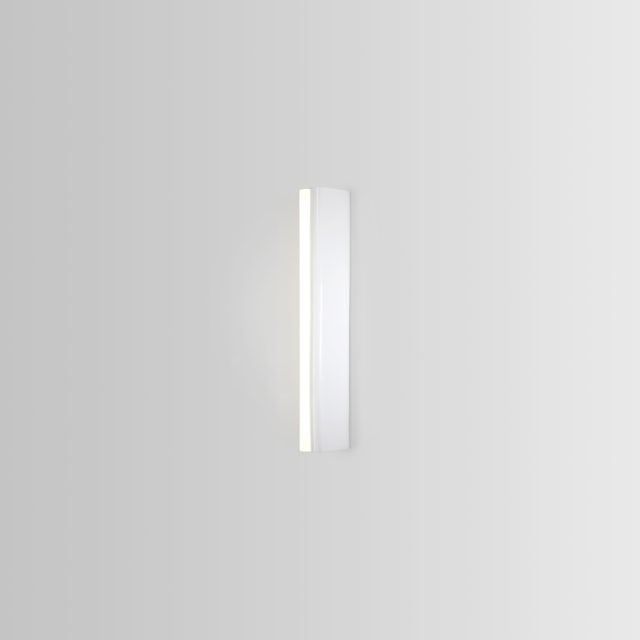
2017
WHITE PORCELAIN SERIES T1 AND T2
White Porcelain Series is a lighting collection comprising of sconces with an emphasis on materiality and simplicity of form. It is distinguished by refined proportions and sophisticated, invisible fixture details that reintroduce porcelain within a contemporary context and distances it from the utilitarian language with which it is often associated. Referring to the Bauhaus porcelain lights used in the 1930s, this simplified version is slip-casted to provide a tough, resistant finish. Due to the manufacturing process, each piece is inherently unique.

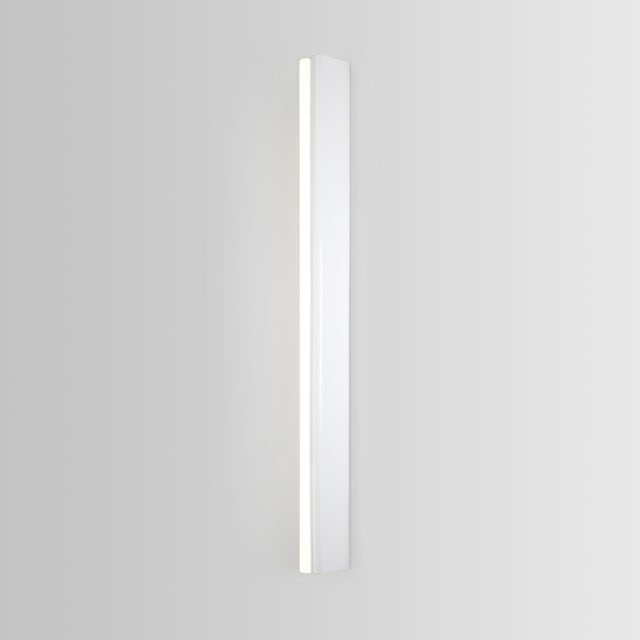


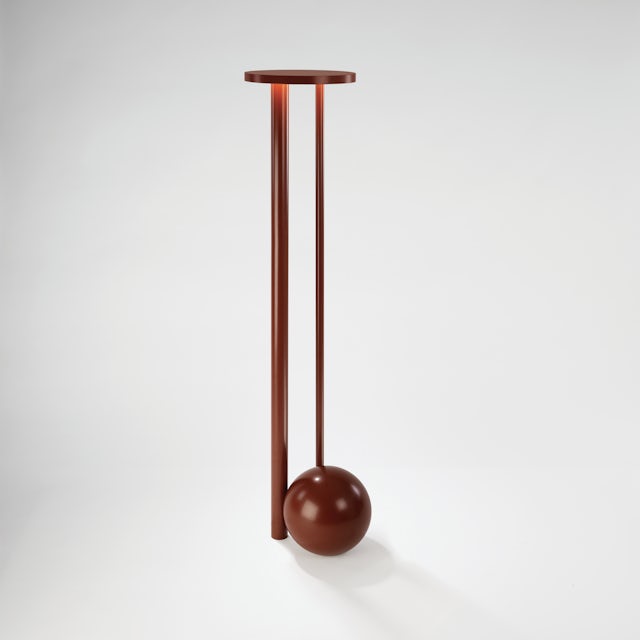
2017
Floor Composition
The Composition series includes a floor and table lamp. They consist of sculptural, elementary forms stacked to create simple, balanced compositions. Each fixture is formed of two cylindrical legs balancing a circular disk, with the Floor Composition grounded by a solid sphere. Illumination is through a bespoke LED circuit with a perspex diffuser, which softly distributes the light downward.
Both Floor Composition and Table Composition are produced in an earthen red, powder-coated finish based on a brass patina developed specially by the Studio.

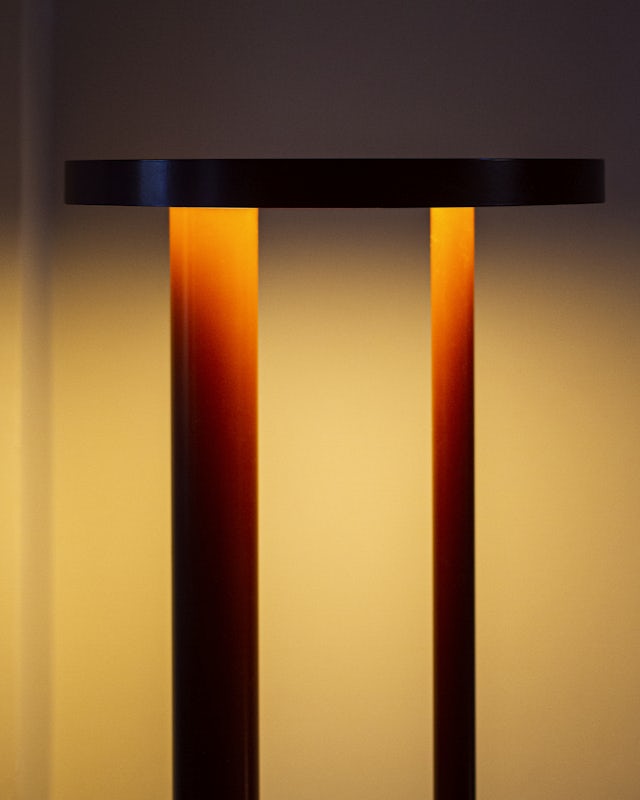
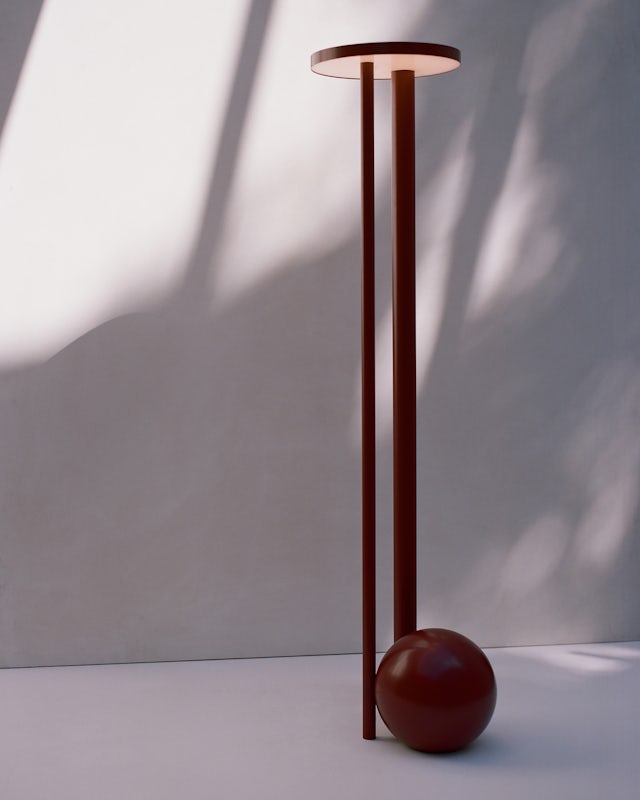



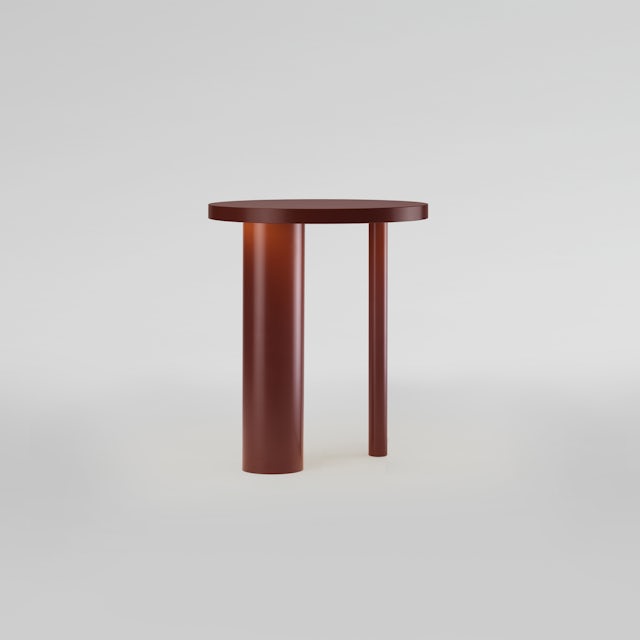
2017
Table Composition
The Composition series includes a floor and table lamp. They consist of sculptural, elementary forms stacked to create simple, balanced compositions. Each fixture is formed of two cylindrical legs balancing a circular disk, with the Floor Composition grounded by a solid sphere. Illumination is through a bespoke LED circuit with a perspex diffuser, which softly distributes the light downward.
Both Floor Composition and Table Composition are produced in an earthen red, powder-coated finish based on a brass patina developed specially by the Studio.

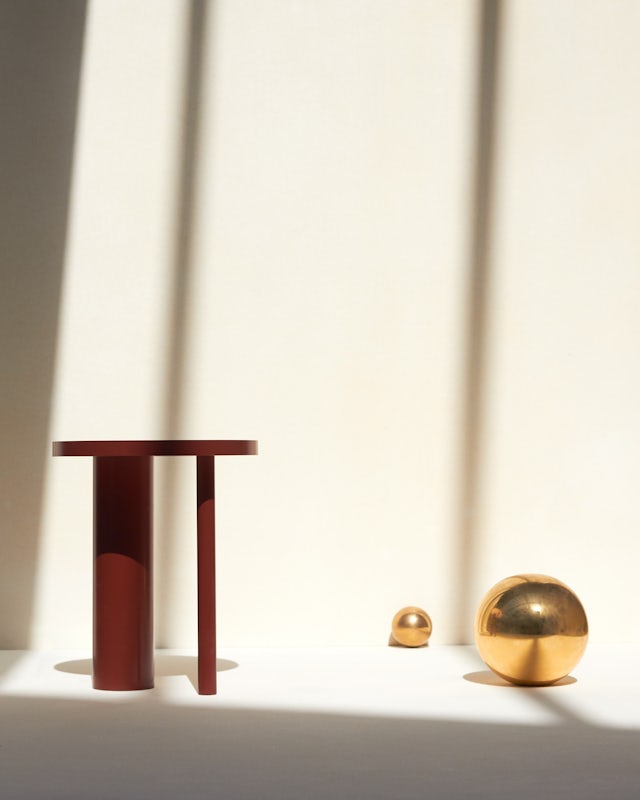



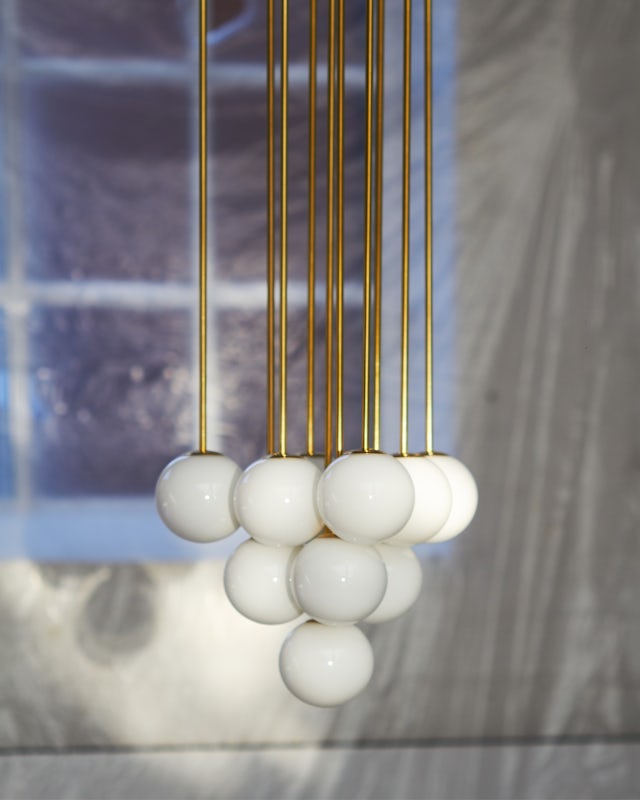
2015
Happy Together
Mouth-blown opaline glass spheres are arranged in different configurations. Stack features four and 10 glass spheres in a pyramid formation, while Berry assembles the globes in the shape of a bunch of grapes. Each rod is an exact length, suspended from a triangular ceiling rose in order to assemble the globes in a perfect formation without any fixing.
‘I have always been fascinated with the sphere; its purity as the ultimate primal form. The design of this series started as a simple exercise of repetition, arranging those spheres in perfect stacks or clusters in an evolving logical sequence.’

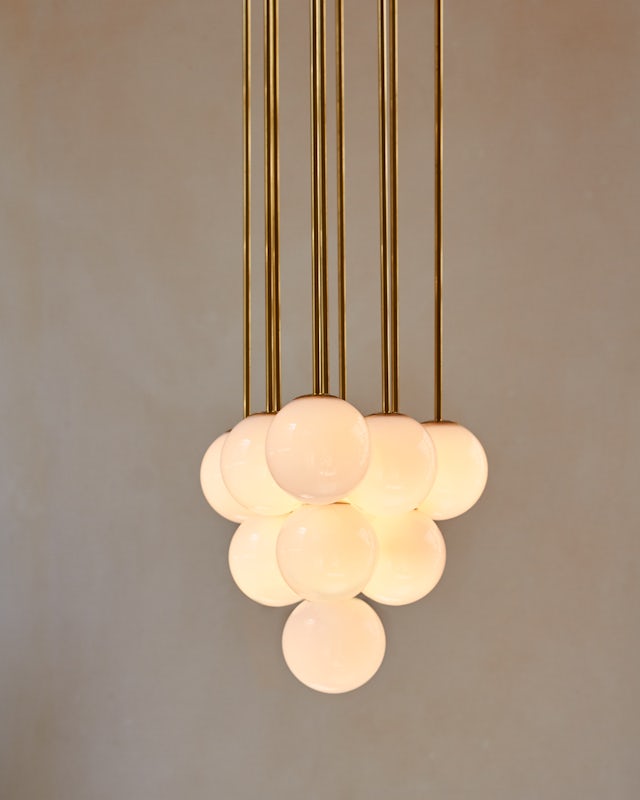
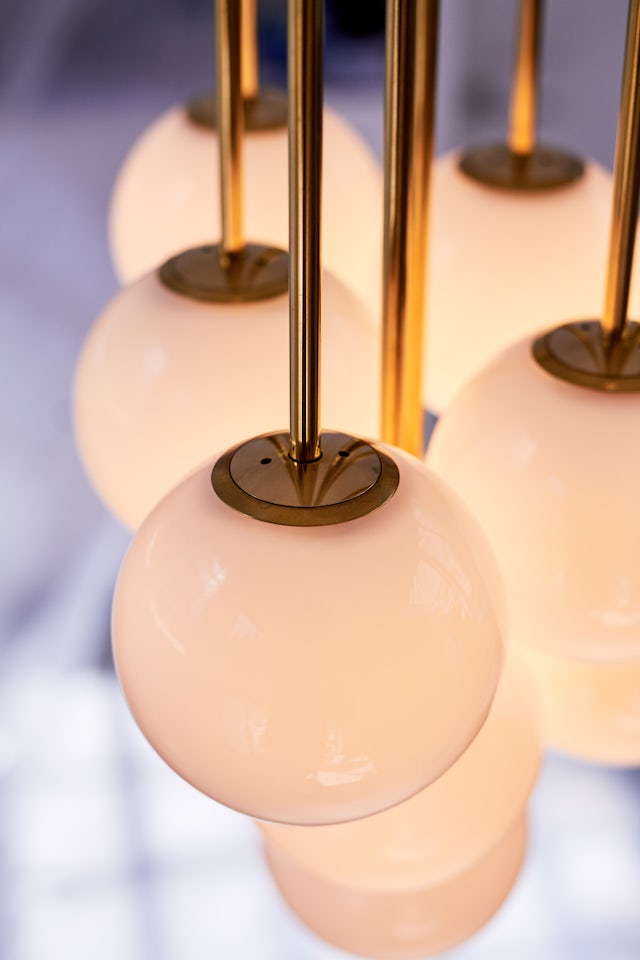
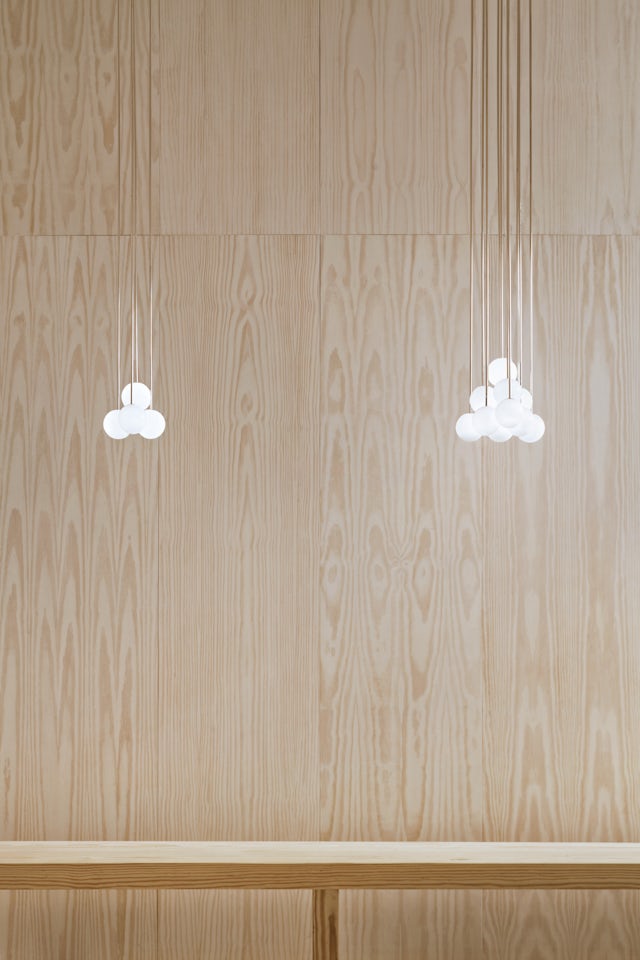



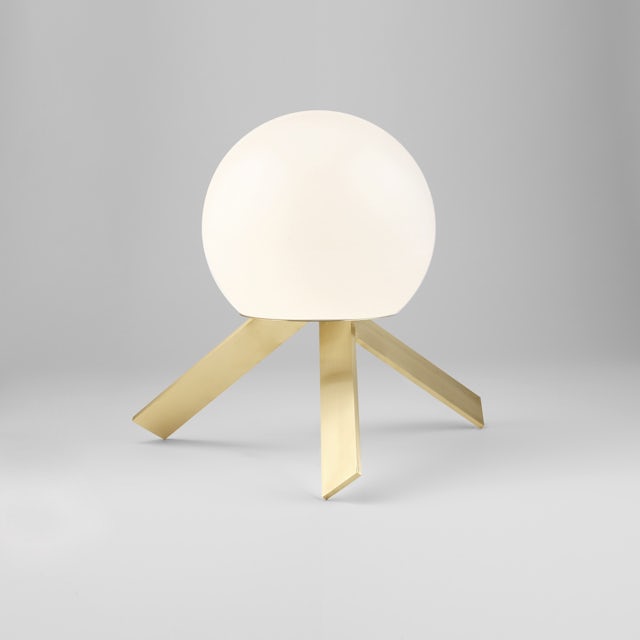
2015
To the Top
Somewhere in the Middle, To the Top and Rest pay homage to Wilhelm Wagenfeld and Carl Jakob Jucker’s MT8 Lamp – also known as the Bauhaus Lamp. Their work was designed in 1924, and is one of the purest expressions of Bauhaus theory. This series features cut opaline spheres resting on different configurations of identical brass sections.

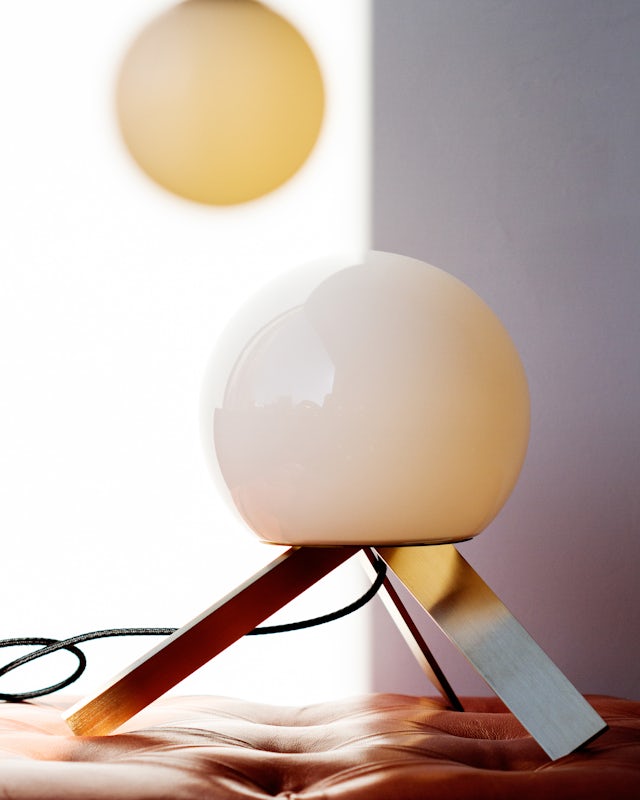
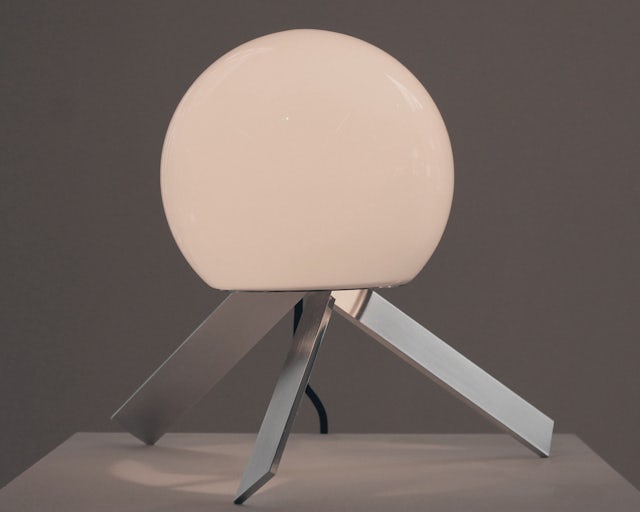


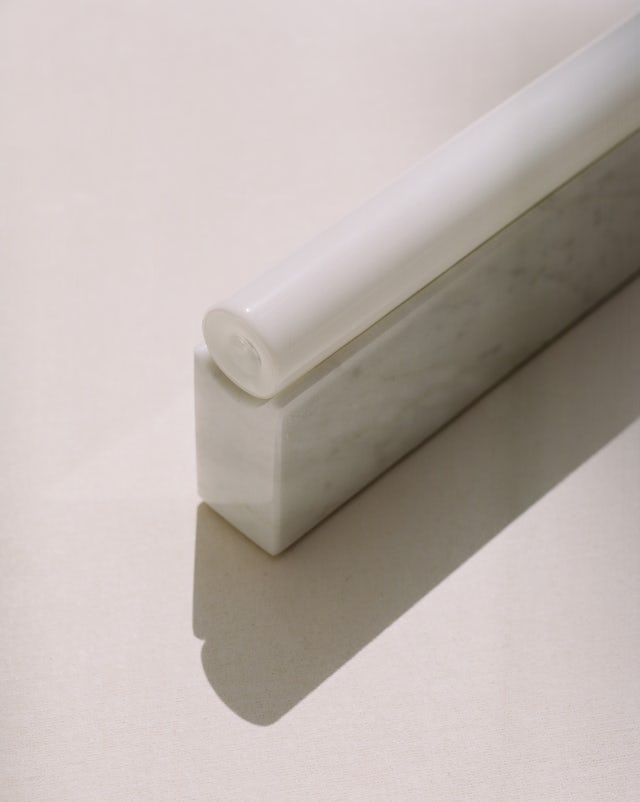
2012
MARBLE STRIP LIGHT
Designed as a limited edition for the Gallery S. Bensimon in Paris, the fixture comprises of a linear bulb resting atop a rectangular marble block.

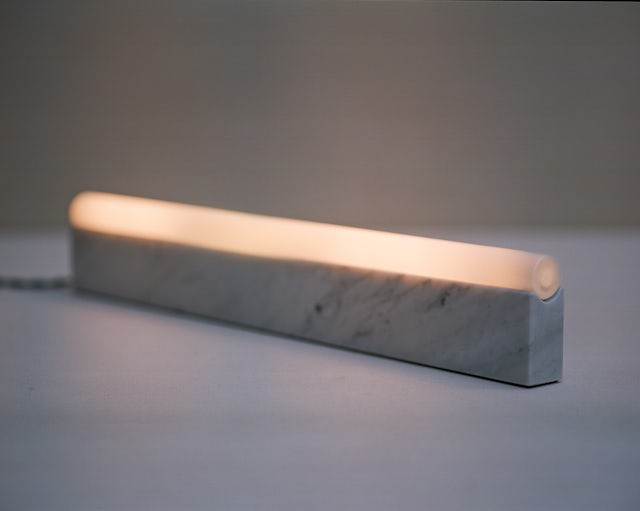
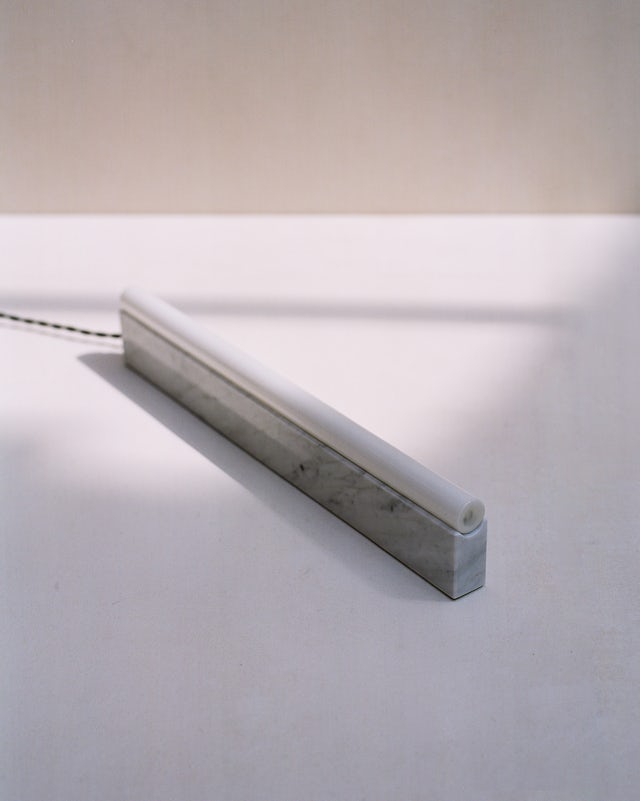

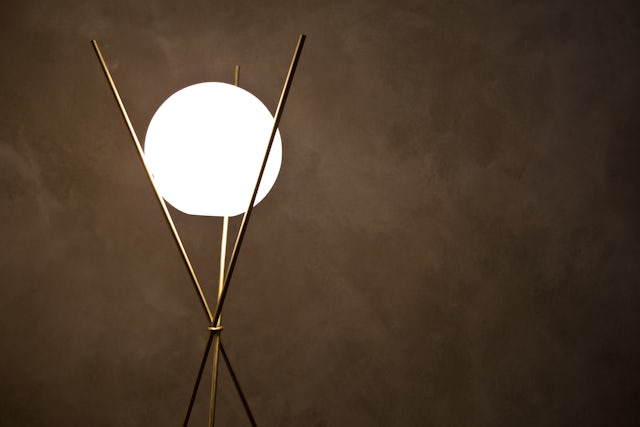
2010, 2013
TREE IN THE MOONLIGHT
‘I have always been fascinated with accidental alignment and how objects sometimes appear perfectly positioned to deceive the viewer of their size and the distance between them. Some of these scenarios appear supernatural, yet they create a perceived image that is beautifully poetic and almost metaphoric.’

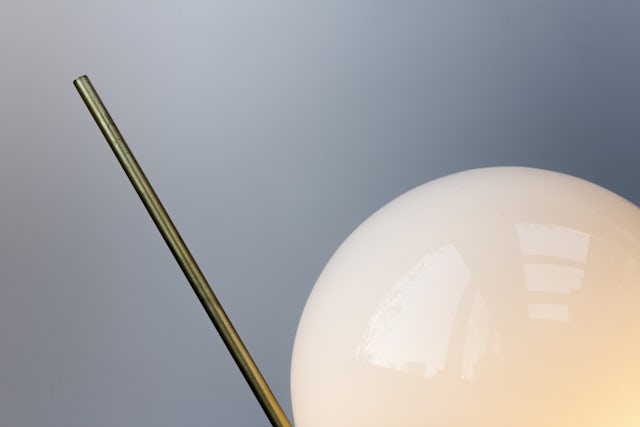
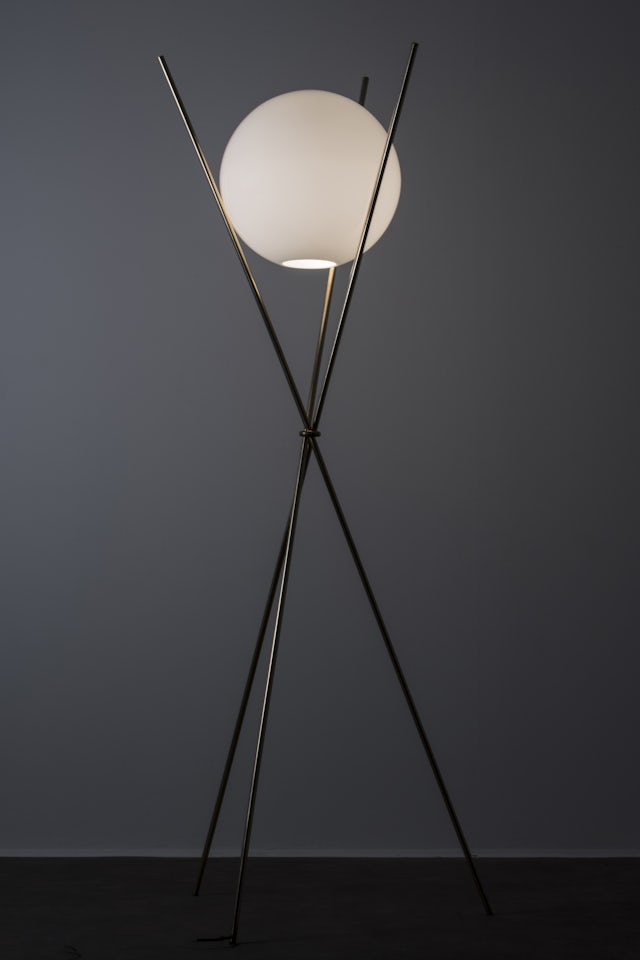
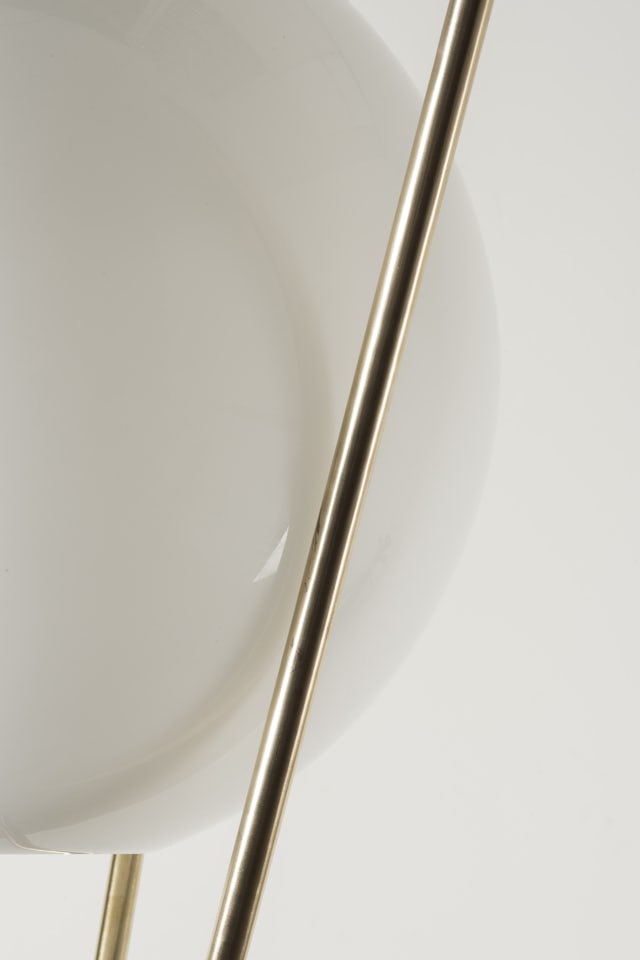


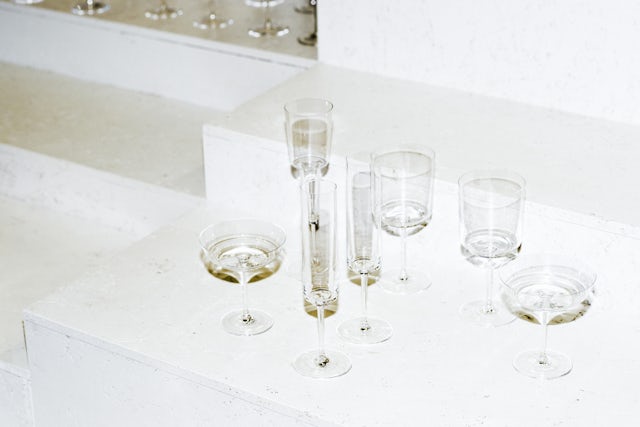
2008
Three Champagne Glasses and One Water Glass
Designed in collaboration with Ilse Crawford, this collection features three champagne glasses and a water glass, each mouth-blown in the Czech Republic. The glasses are intended to heighten awareness of the act of drinking, by offering three different kinds of champagne glasses to mix when you have a gathering. Guests may select whichever style they like.
These glasses explore the sense of how one drinks, and how people’s behaviour and mannerisms change in relation to the shape of the glass they’re holding. This collection also reflects on the changing fashion of champagne glasses throughout history, from the 1920s saucer to the modern-day flute.


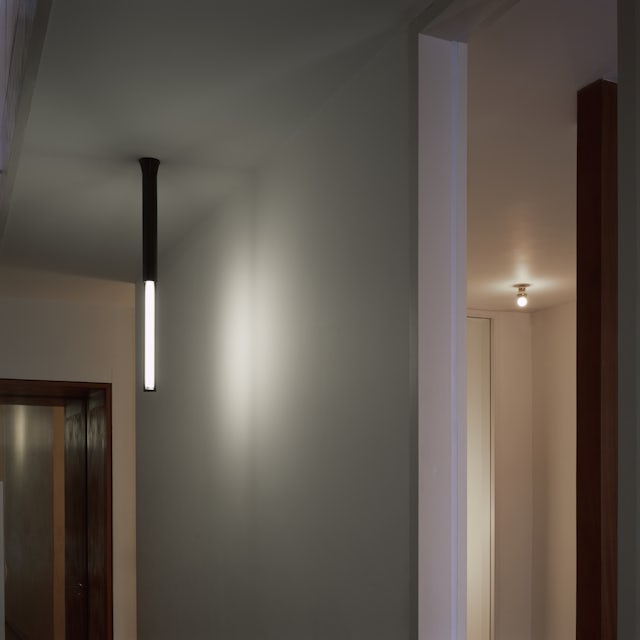
2008
CFL
The design is an homage to a light designed by Josef Hoffmann in 1903-1904. A metal rod is wrapped around a compact fluorescent light of the same size, celebrating the distinct shape of that type of CFL bulb through a simple repetition.

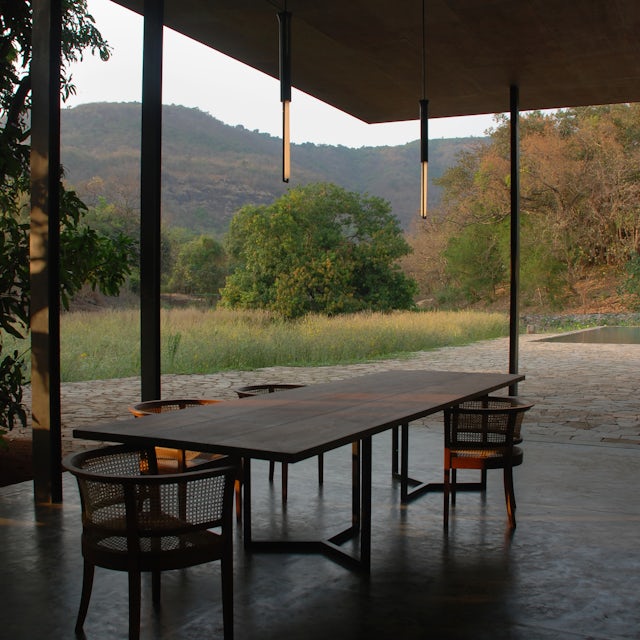
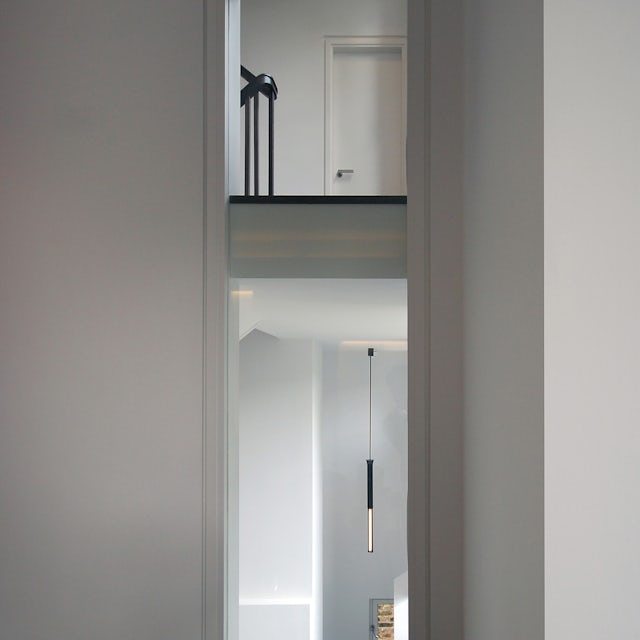
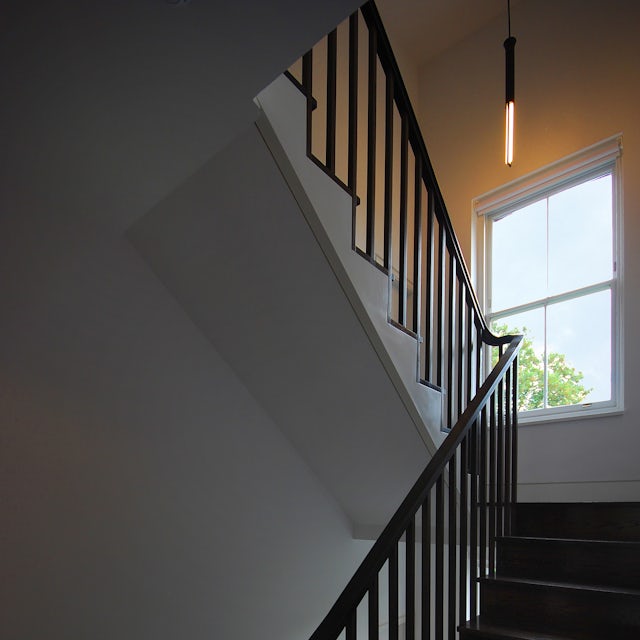


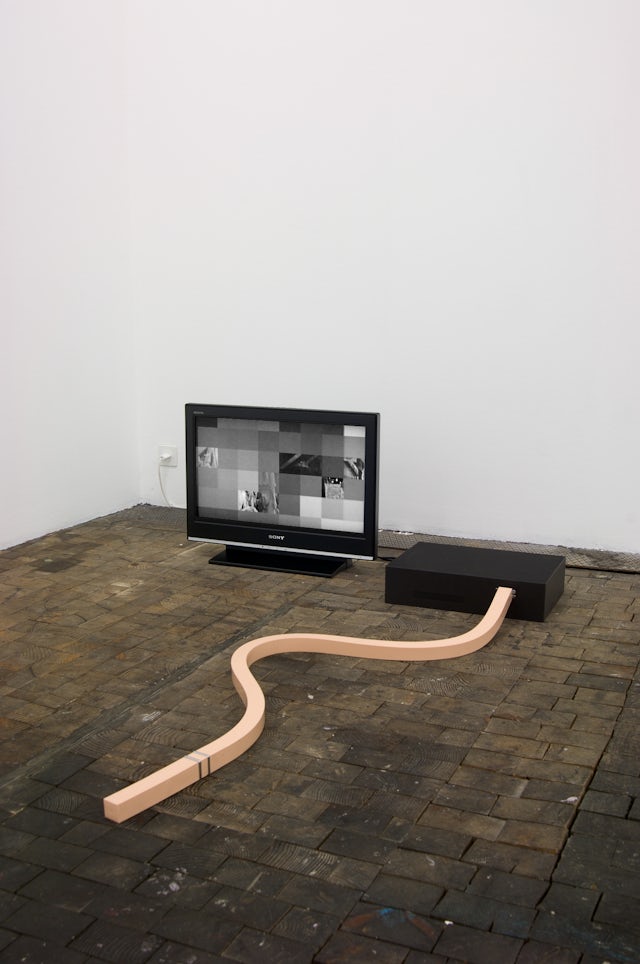
2007
DO YOU WANT TO REPLACE THE EXISTING NORMAL?
A project conceived as a proposal for a collection of therapy objects using electronics to assist in overcoming contemporary anxieties. An evolution of Design for Fragile Personalities in Anxious Times, this project is the third in a series of collaborations with Anthony Dunne and Fiona Raby.
Perfect Alignment, 2007
English oak, pink RipStop fabric, and various materials
1000mm x 2000mm x H700mm
After purchasing Perfect Alignment, the user inserts data relating to their exact place, date and time of birth. The device scans the person’s astrological data and looks for moments in their life with favourable conditions for them to act upon love. These times might have passed or are yet to come. At these moments, a pink fabric crystal inflates from the exploded box and slowly deflates throughout the course of the day, marking the exact time for perfect conditions. What happens next is up to the owner.
Risk Watch, 2007
Silicone, electronics, and MP3 player
450mm x 2004mm x H95mm
Feeling a little anxious? Raise the Risk Watch to your ear. It will tell you, on a scale of one to five, what level of political, social, and economic risk you are under at that moment.
Statistical Clock, 2007
Reticulated foam, electronics, micro-controller, and wi-fi connection
375mm x 600mm
The information is communicated through an electronic voice. There are three individual channels the user can tune in to, each associated with a particular type of accident: car, train or airplane crashes.
S.O.C.D. (Sexual Obsessive Compulsive Disorder), 2007
Steel, silicon, electronics, and computer
32mm x 39mm x 245mm
To treat S.O.C.D., insert your favourite guilty-pleasure DVD into this device, then hold the sensor. As excitement levels increase, the image becomes more and more pixelated and the sound quality declines.
‘Do you want to replace the existing normal?‘ was exhibited at ‘Wouldn't it be nice …‘ at Centre d'Art Contemporain.


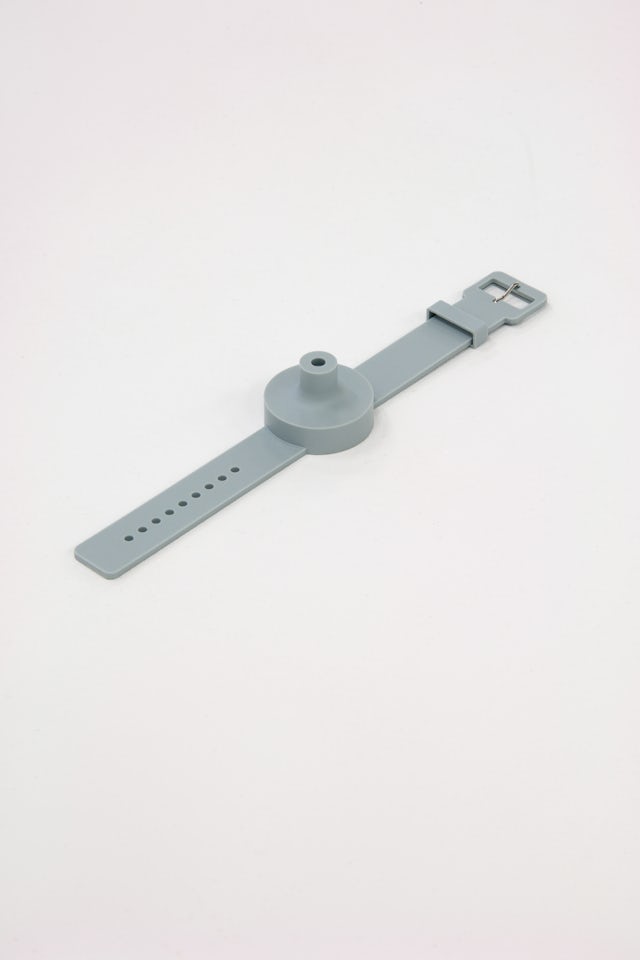
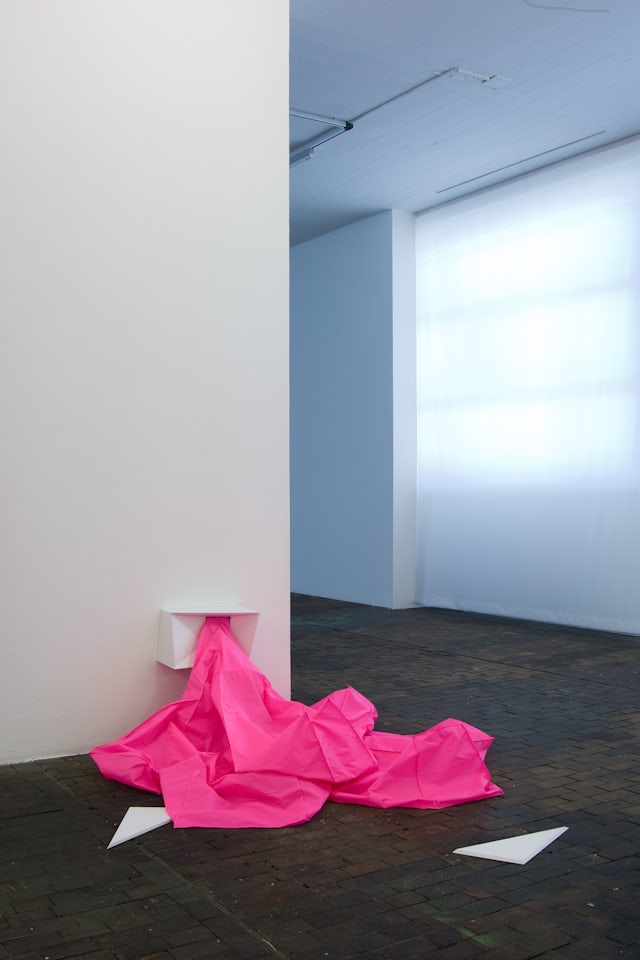



2006
Crystal Rings
This series of jewellery is designed to be held freely between the fingers, in a tactile play between control and spontaneity, geometry and body.






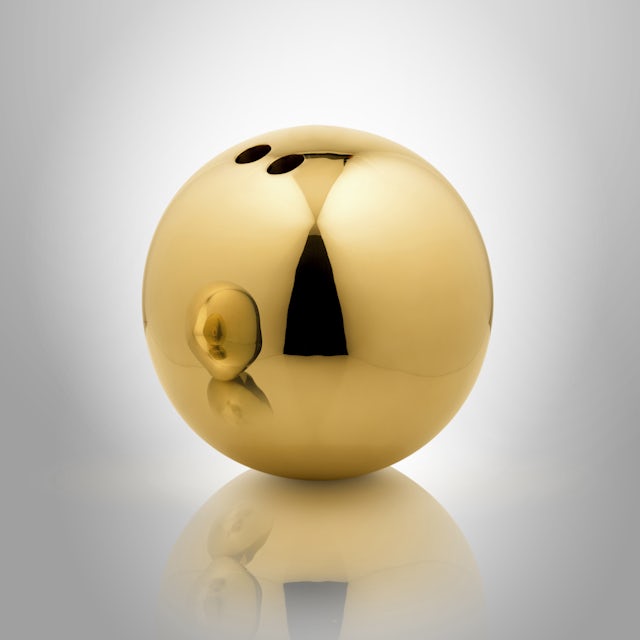
2006
BALL VASE
The Ball Vase has the same diameter as a bowling ball, with holes recalling those that allow the player to grip it. The vase is available in three models, each with a different distribution of holes arranged in awkward and dysfunctional configurations – one of the three holes that would be necessary for grip is always missing. Presented in polished brass, the spherical surface acts as a mirror, reflecting the entire room in which they are placed.

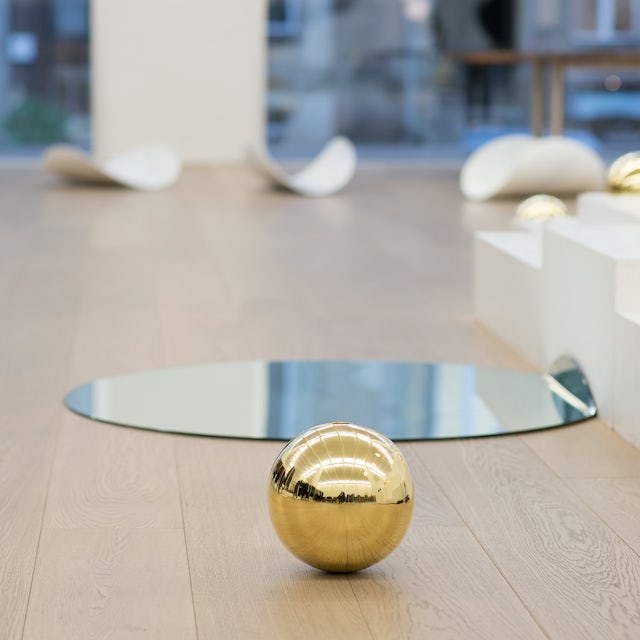
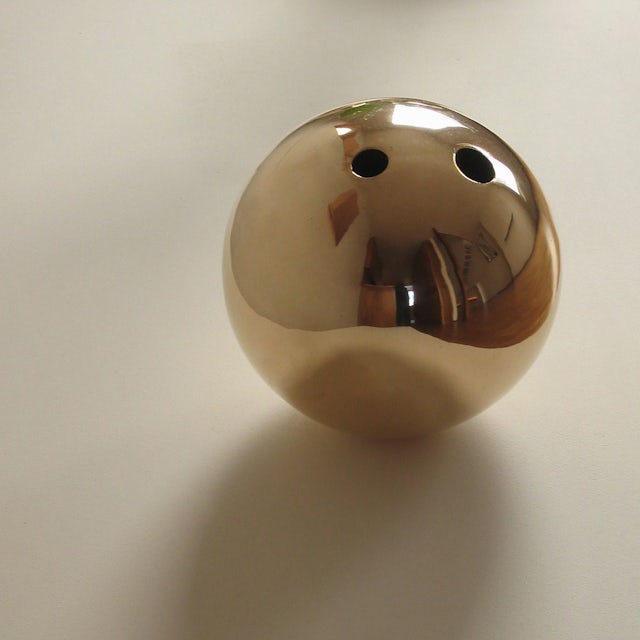



2006
BRONZE RINGS
This series of jewellery is designed to be held freely between the fingers, in a tactile play between control and spontaneity, geometry and body.


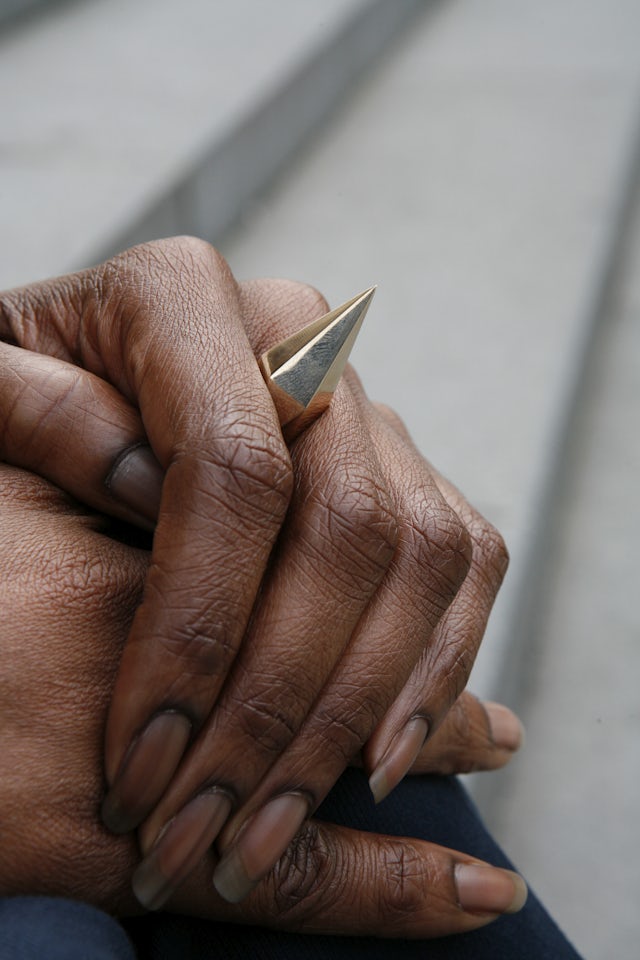

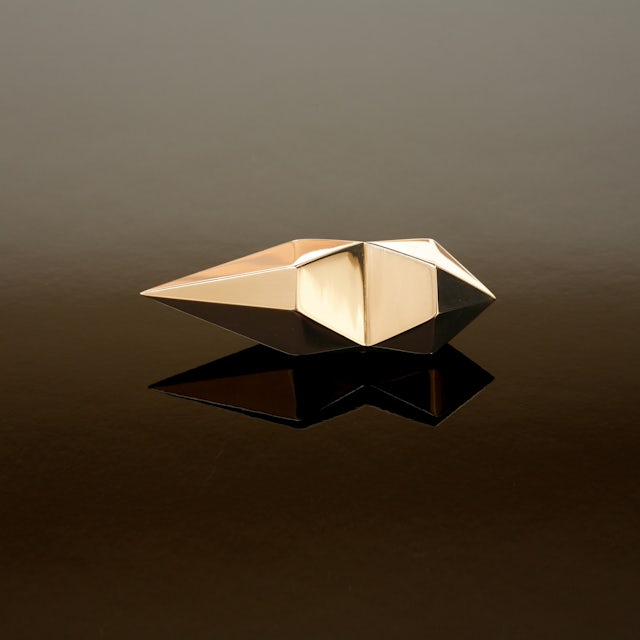
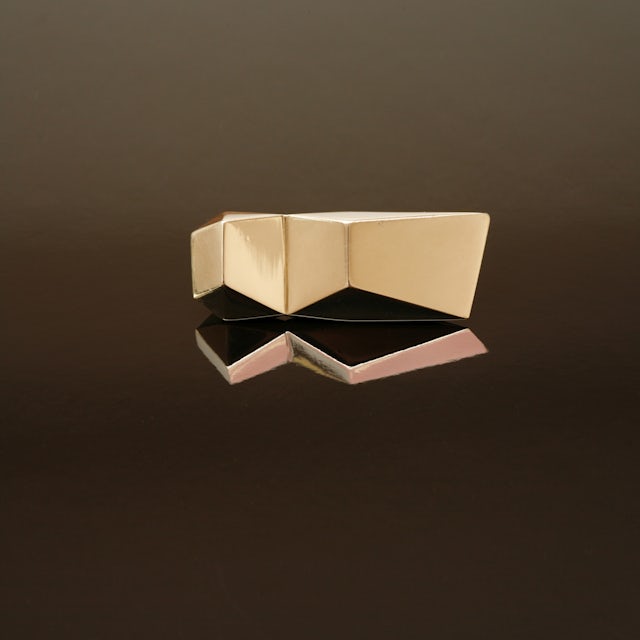
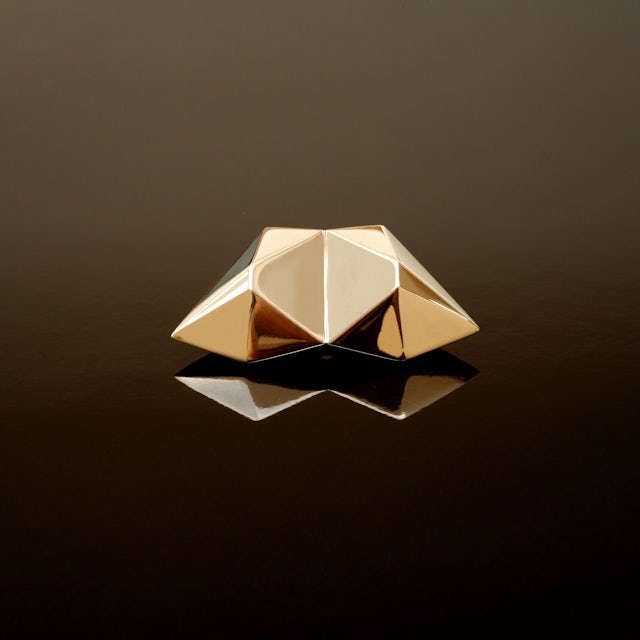





2006
SILVER SERVICE
Originally commissioned by German porcelain manufacturer Rosenthal, Silver Service was later developed and prototyped by one of our partner workshops. This piece was never made available commercially.


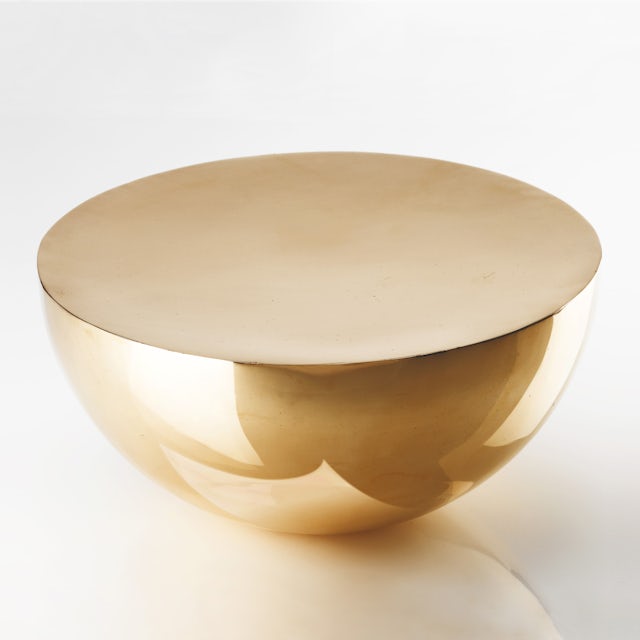
2006
BRONZE BOWL
A series of perfectly hemispherical cast bronze bowls, whose geometry allows them to rest perfectly level. The elevated surface is used for the display of a small object or can simply be left empty. The highly polished surface reflects the room it is placed in.


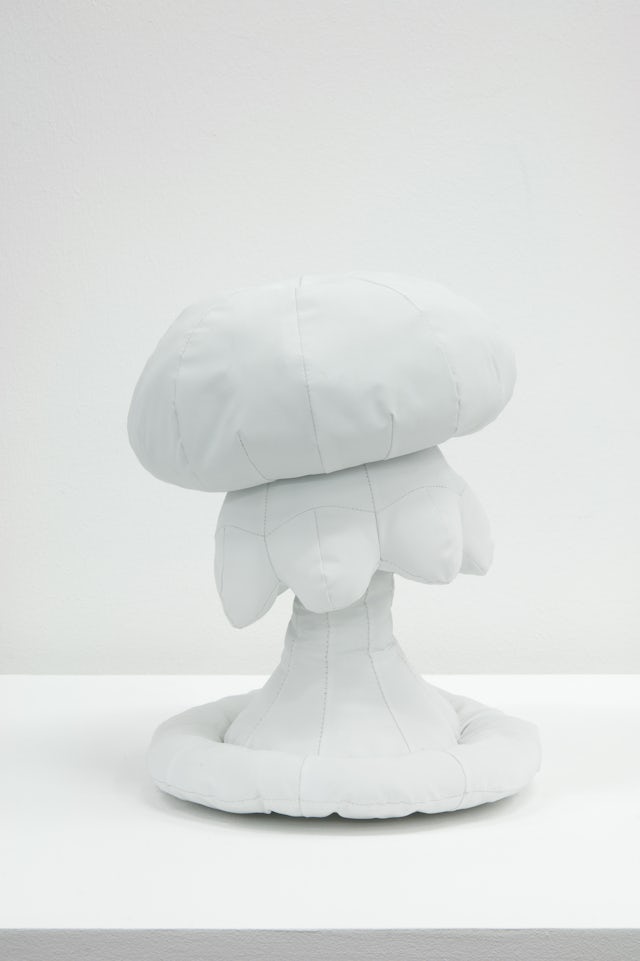
2005
DESIGNS FOR FRAGILE PERSONALITIES IN ANXIOUS TIMES
The second project in collaboration with Dunne and Raby, this was a proposal of therapy objects to help one overcome the anxieties of modern life.
HUGGABLE ATOMIC MUSHROOMS, 2005
The Huggable Atomic Mushrooms are for people who are afraid of nuclear disaster. These are cuddly toys in the shape of atomic explosions or nuclear clouds, which work as treatments for phobias – hugging them allows for gradual exposure to the concept, familiarising the user with the idea of a possible nuclear disaster.
Huggable Atomic Mushroom: Red and White
PRISCILA
37 KILOTONS NEVADA 1957
Reflective fabric, polyester stuffing
H270mm x ∅300mm
Huggable Atomic Mushroom: White
SEMINOLE
13.7 KILOTONS ENEWETAK ATOLL 1956
Knitted mohair, foam
H400mm x ∅1140mm
HIDE AWAY FLOOR FURNITURE
Each of the pieces is designed around a specific pose. The poses encourage the occupant to feel in control, proud and comfortable – the opposite of a foetal position, which would make them feel like a victim. The poses also result in an unusual shape, helping to disguise the fact that the furniture can be occupied.
TYPE 1, 2005
English oak, felt
H900mm x W960mm x L1860mm
The occupant lies on their back, hands behind their head and legs in the air.
TYPE 2, 2005
English oak, felt
H700mm x W720mm x L1800mm
The occupant adopts the reclining pose of Goya’s Maja.
TYPE 3, 2005
English oak, felt
H550mm x W810mm x L2460mm
The occupant lies on their side, head resting on hand, left leg bent outwards.
‘Designs for fragile personalities in anxious times‘ was exhibited at ‘Wouldn't it be nice …‘ at Centre d'Art Contemporain.


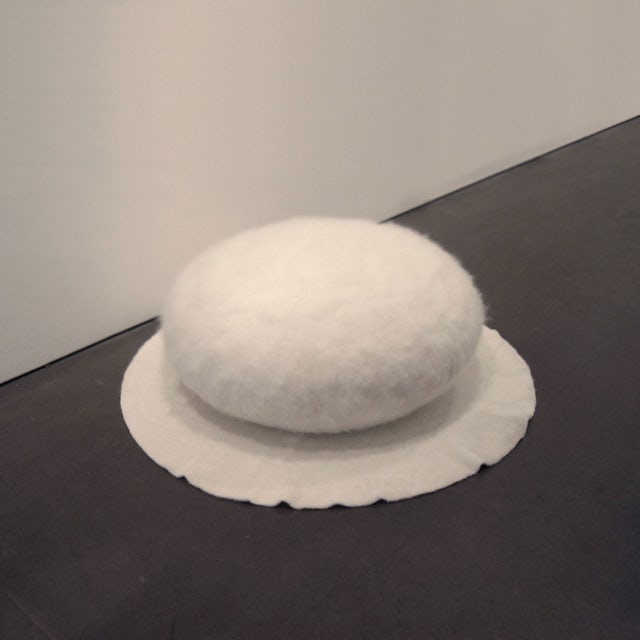
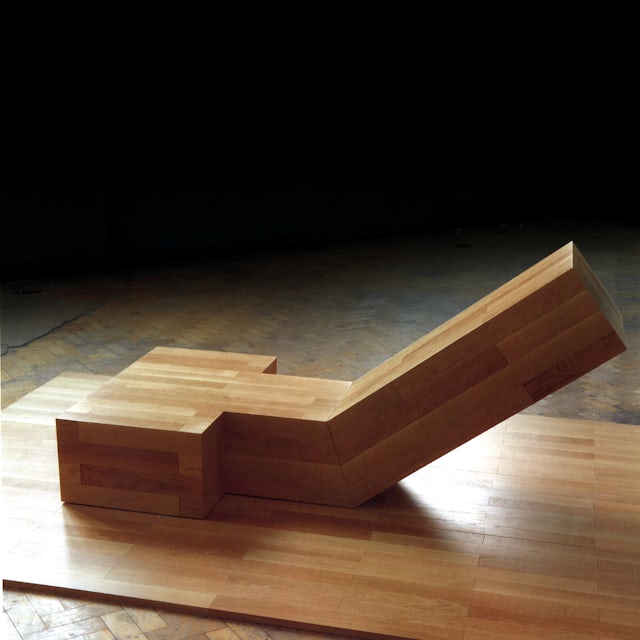
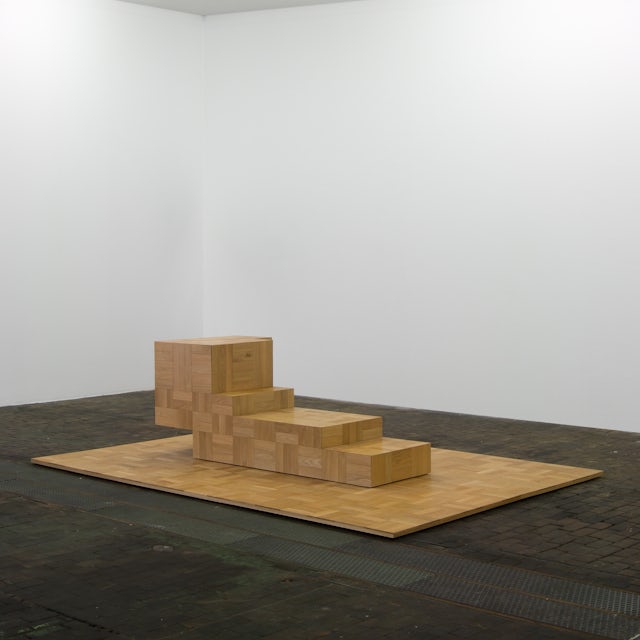

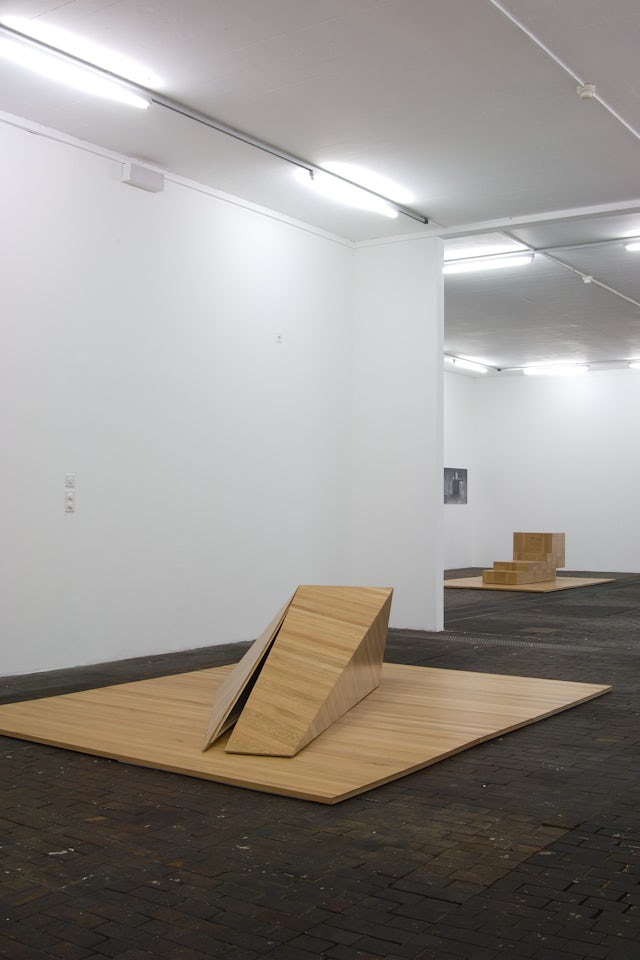




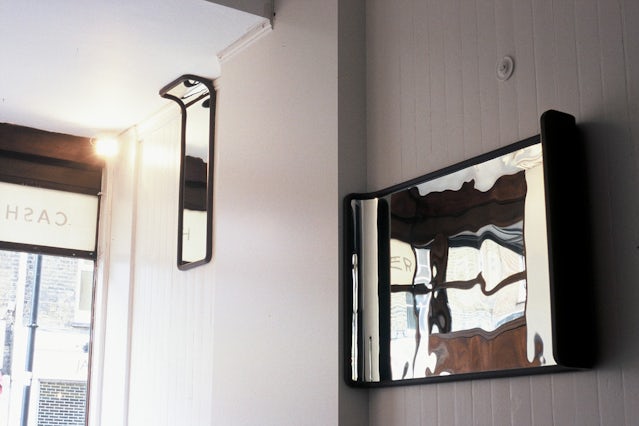
2001
Corner Mirrors
The Corner Mirrors unusually occupy junctions between walls, or between walls and ceiling, but can equally be positioned on any wall surface. The glass planes are folded over plaster moulds developed specifically for the project. The moulds were created by applying extreme temperatures in large ovens, which cause the glass to melt. The cooling process results in a slightly wavy surface. These pieces were designed more to reflect light and space, while at the same time questioning the idea of true reflection.
Corner Mirrors were exhibited at Exmouth Market, London.

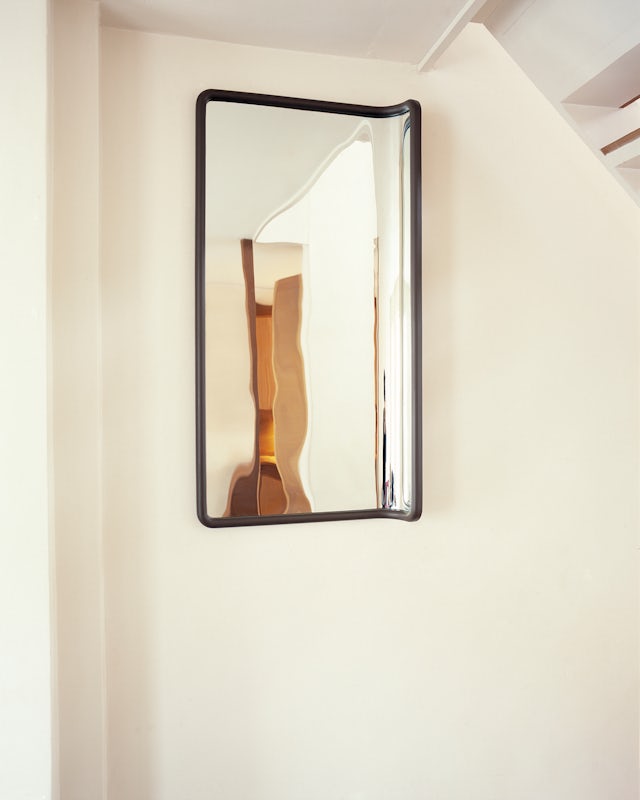
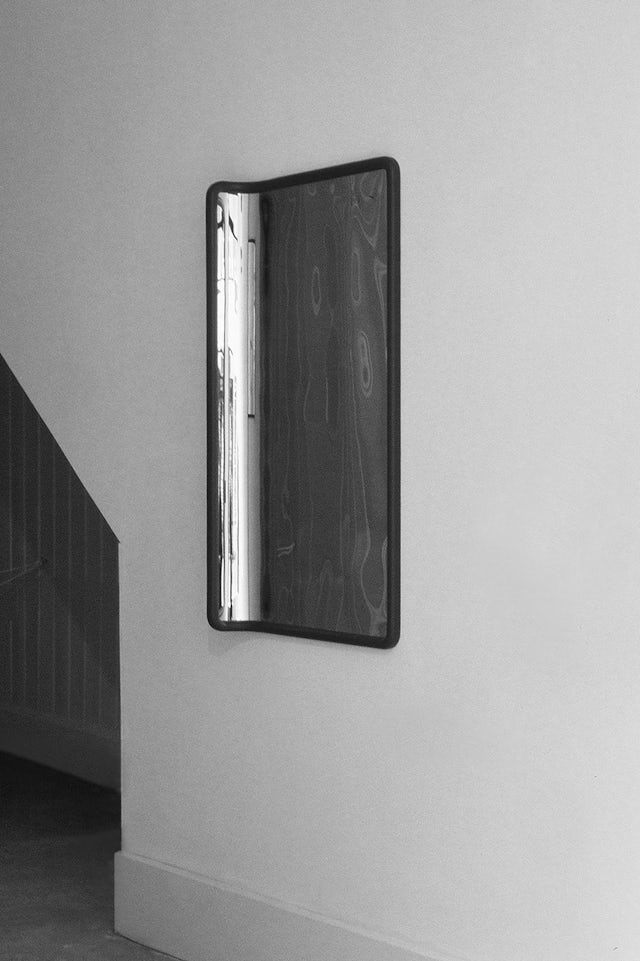


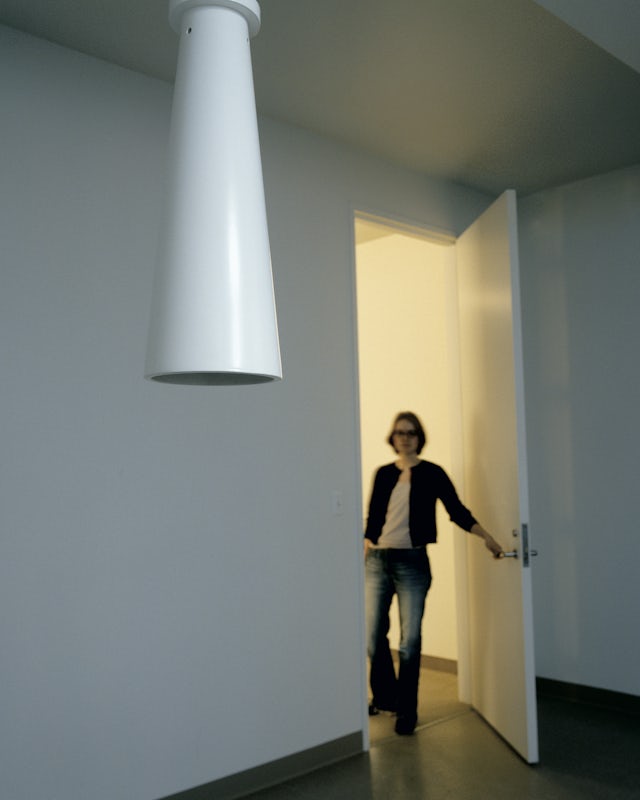
2001
SOCIAL AND ANTI-SOCIAL LIGHTS
The Anti-Social Light and its antithetic sibling Social Light are designed to be responsive to a user’s behaviour. Both are intended to illuminate a space while exploring the relationship between people and the objects in their home.
With both lights, the user cannot simply command an action to occur – instead, their behaviour produces a specific effect. For example, the Anti-Social Light will only illuminate in the presence of silence. Speech, ambient sound or noise causes it to dim and eventually switch off. Conversely, the Social Light requires sound or conversation to activate it.
The solitary act of reading and the conviviality of a dinner conversation suggest two ideal environments for each of these lights. This animation of ordinarily inanimate objects introduces an unexpected element of surprise that fundamentally recasts our relationship with products. It has very much to do with respect for what the object needs and what it demands, or it won’t respond the way you want it to. In an abstract way, it is almost like a companion that behaves a certain way in the house.

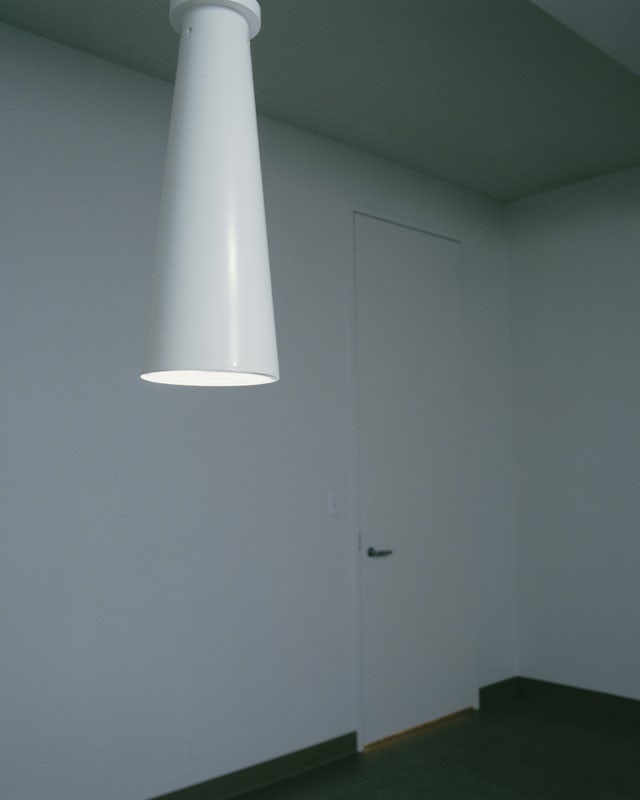


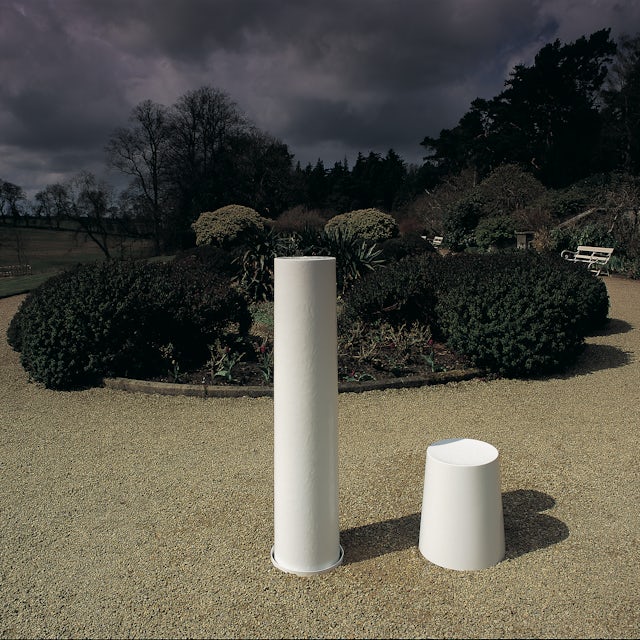
2000
SITOOTERIES
Sitooteries was a commission for an exhibition at Belsay Hall in Northumberland, consisting of a lamp post and fountain, which were conceived as places for contemplation.
The lamp post behaves in a similar way to the Anti-Social Light, glowing only when there’s absolute silence, hence providing a tranquil, meditative setting. Meanwhile the fountain is designed to overflow and is accompanied by an identical stool for the user to position and sit alongside the structure, enjoying the sound of the overflowing water.

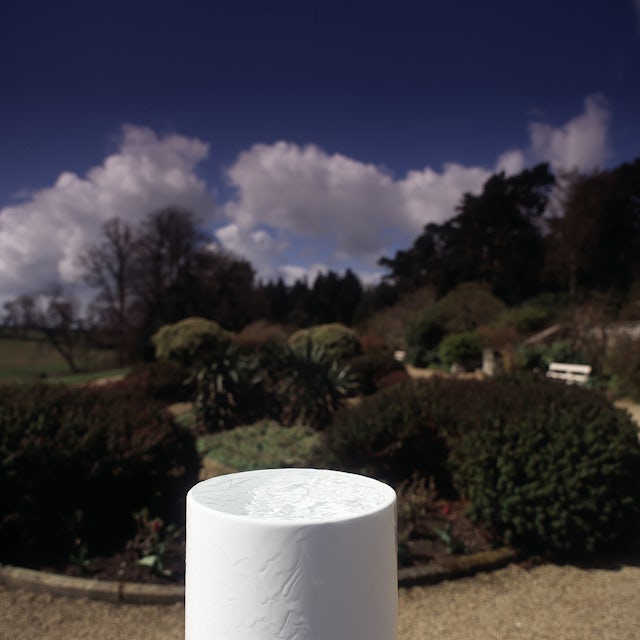
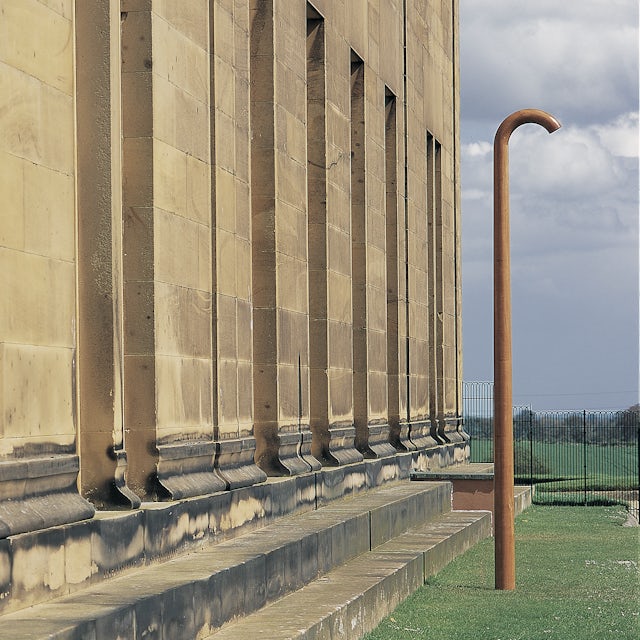


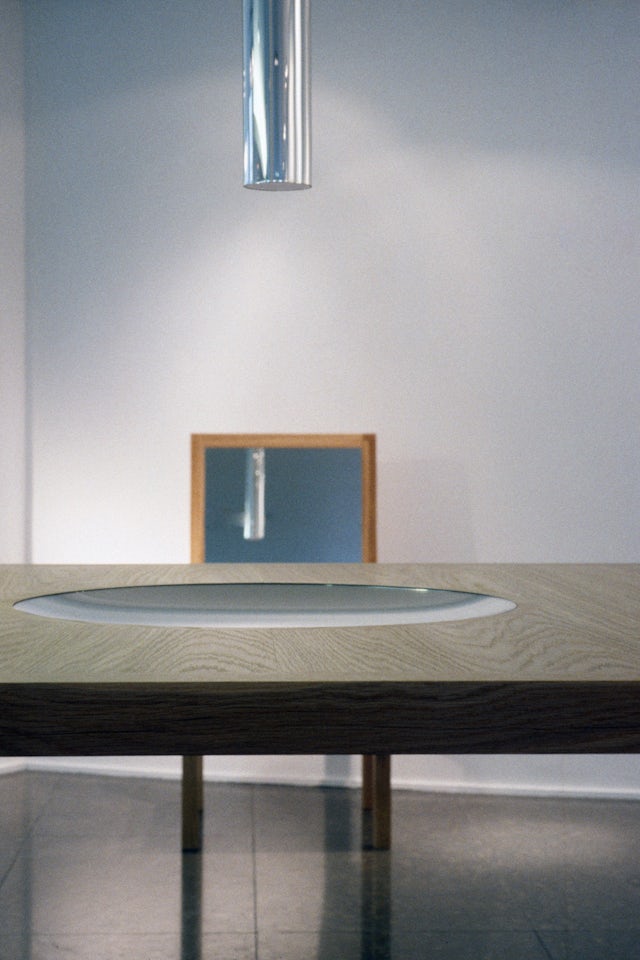
1998, 2006
Mirror Pendant
A special exhibition commissioned by renowned Parisian concept store Colette, presented in early September 1998. The installation consists of two chairs, a table and a light that, when together, form an out-of-the-ordinary dining setting. A slightly concave reflective surface set in the centre of the table perfectly catches the beam of light projected by the lamp above it, reflecting it back up into the room. The back of one of the chairs incorporates a mirror, inviting solitary diners to have company looking at their own reflection. The installation recalls certain atmospheres linked to surrealism and the redefines everyday objects as mysterious presences.

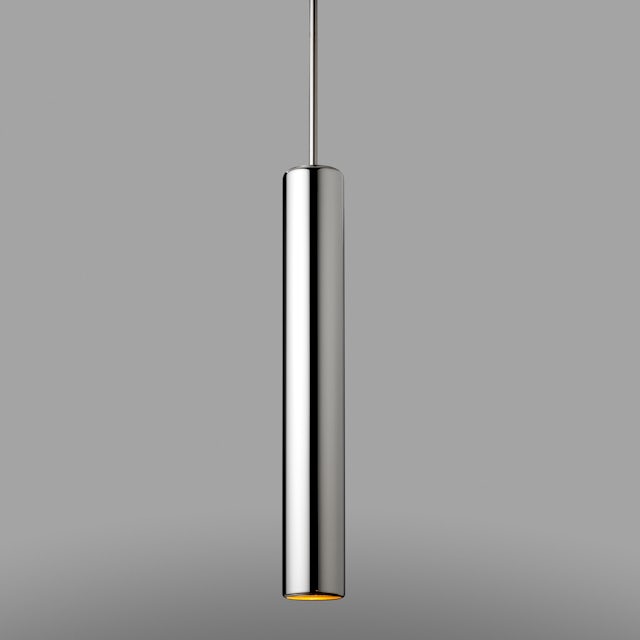
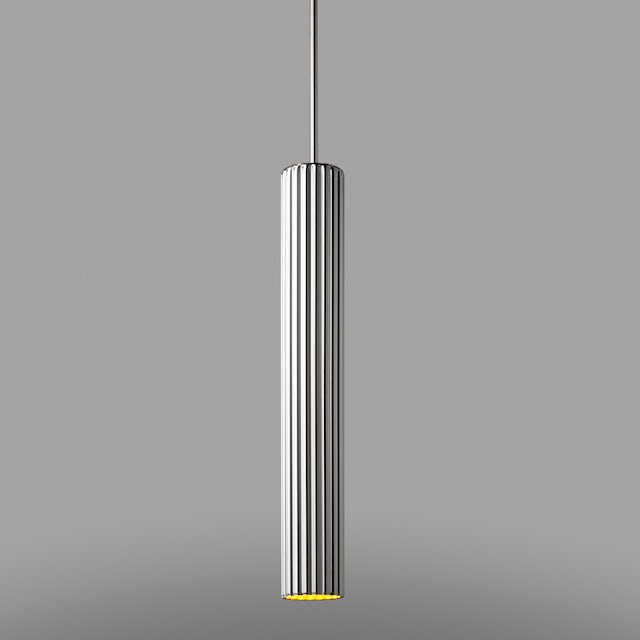

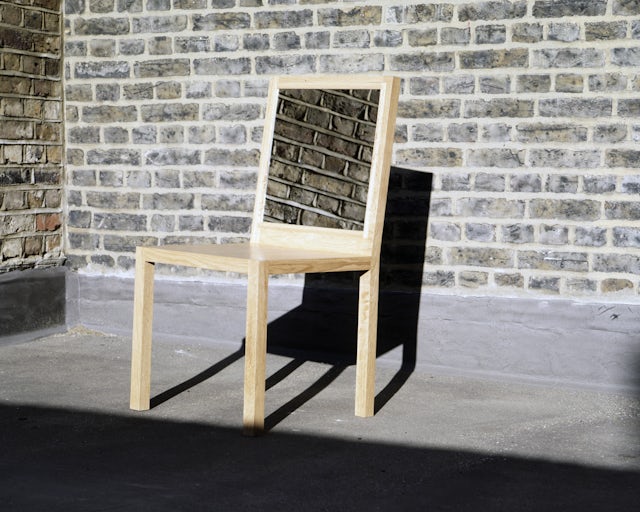
1998
MIRROR CHAIR AND TABLE
A special exhibition commissioned by renowned Parisian concept store Colette, presented in early September 1998. The installation consists of two chairs, a table and a light that, when together, form an out-of-the-ordinary dining setting. A slightly concave reflective surface set in the centre of the table perfectly catches the beam of light projected by the lamp above it, reflecting it back up into the room. The back of one of the chairs incorporates a mirror, inviting solitary diners to have company looking at their own reflection. The installation recalls certain atmospheres linked to surrealism and the redefines everyday objects as mysterious presences.


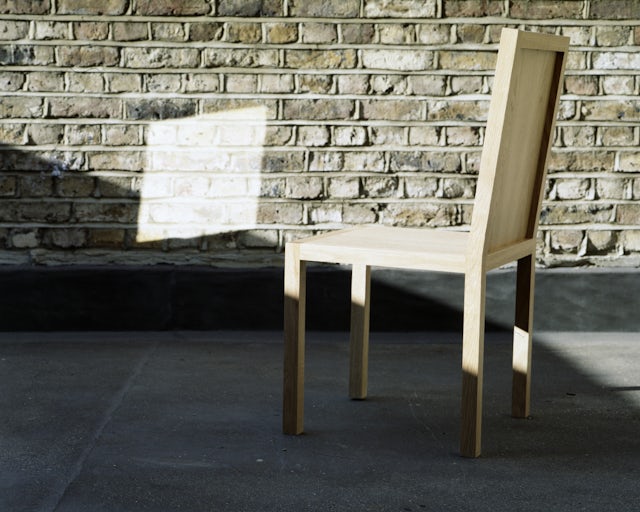
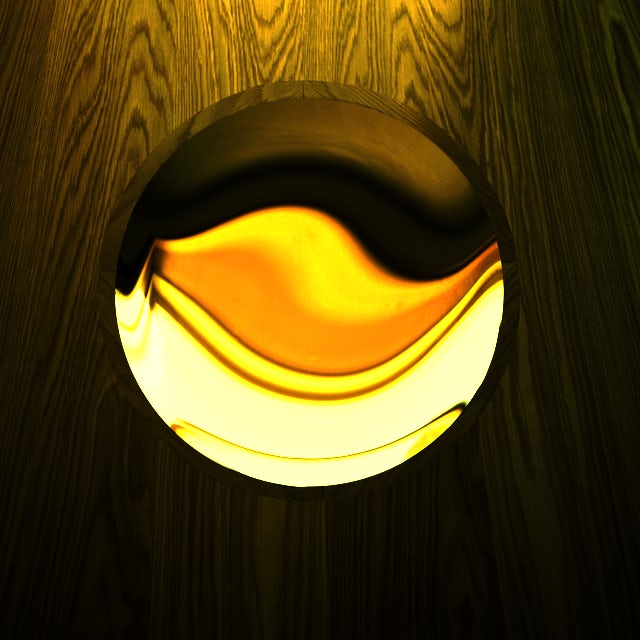




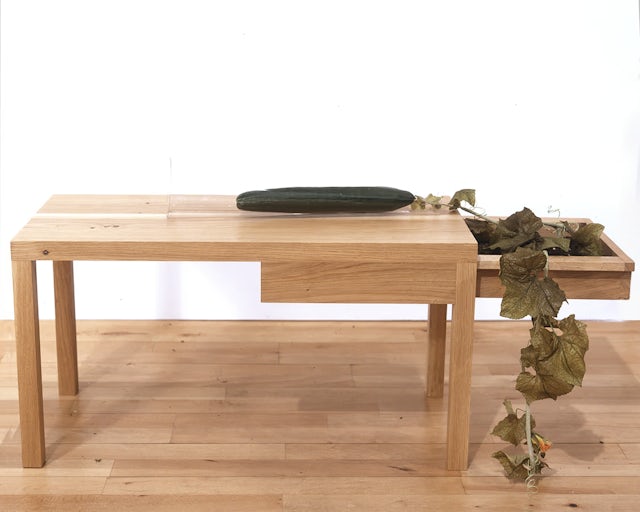
1998
WEEDS, ALIENS AND OTHER STORIES
Cricket Box
English oak CD player and loud speaker
400mm x 150mm x 1250mm
A drawer for collecting garden sounds.
Cucumber Sandwich
English oak cucumber plant
1000mm x 350mm x H420mm
A device for containing, growing, straightening and displaying cucumbers.
Garden Horn
English oak
1500mm x 80mm
A device for speaking to plants that otherwise might feel neglected.
Intensive Care
English oak, wire
1500mm x 250mm x 60mm
Communication with demanding plants, anywhere, anytime.
Meeting
English oak, metal
850mm x 850mm x H820mm
A piece of indoor furniture to grow and look after. A place to meet and make up when lovers become neighbours.
Reserved
English oak, flowers
1000mm x 450mm x H750mm
Seating to be shared with flowers.
Rustling Branch
English oak, electronics
1000mm x 200mm x H100mm
Sounds replace appearances, an alternative to the vase.
Talking Tabs
English oak, terracotta, pots, plants
250mm x 110mm
Labels that recite poems or recipes to plants.
‘Weeds, Aliens and Other Stories‘ was exhibited as part of ‘Stealing Beauty‘ at the ICA.


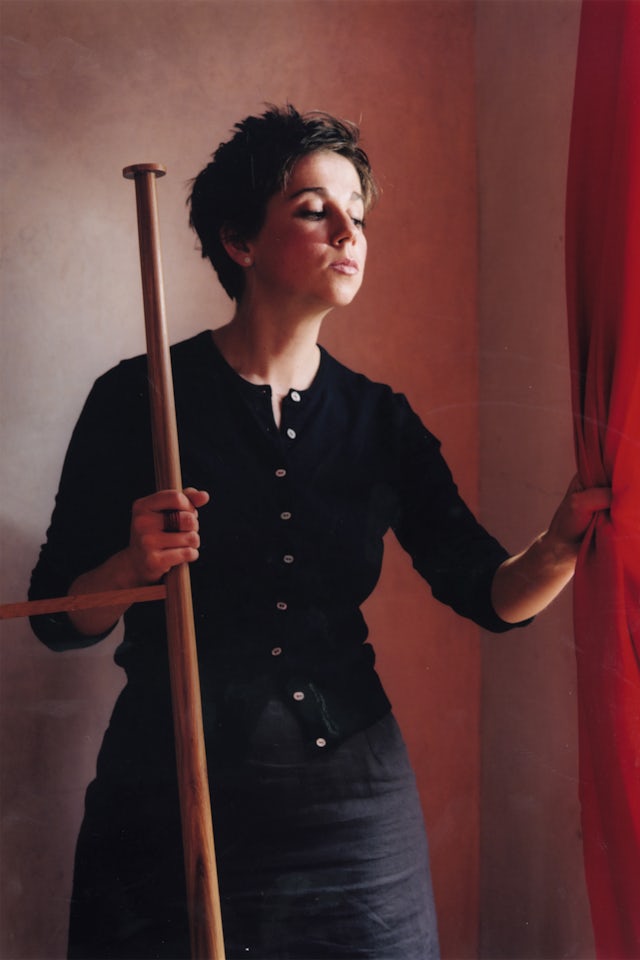
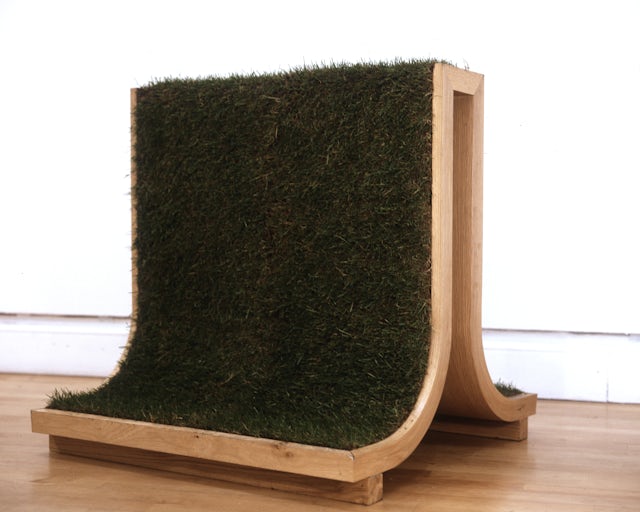
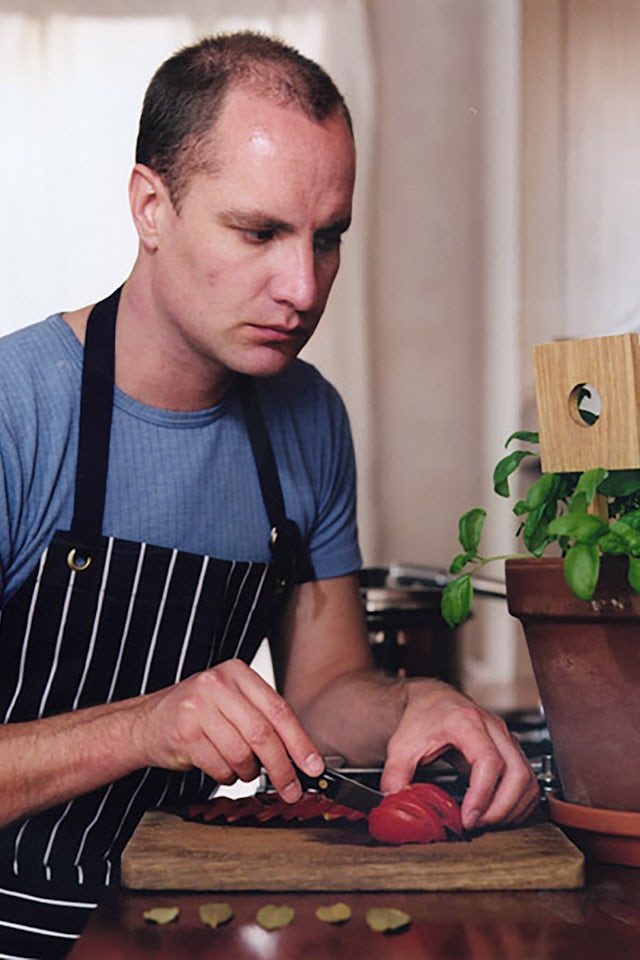
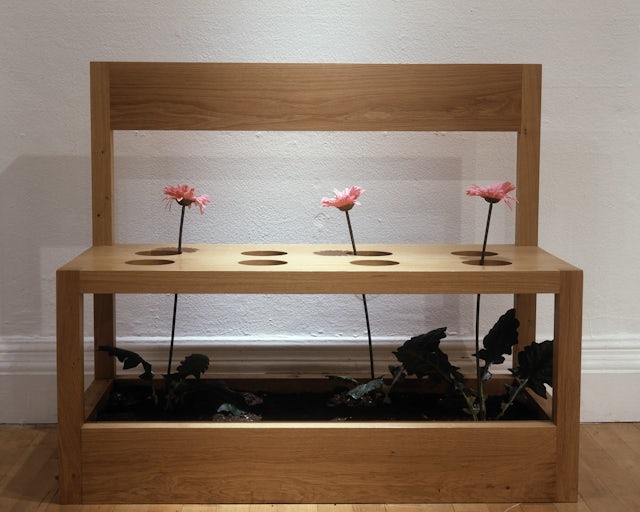
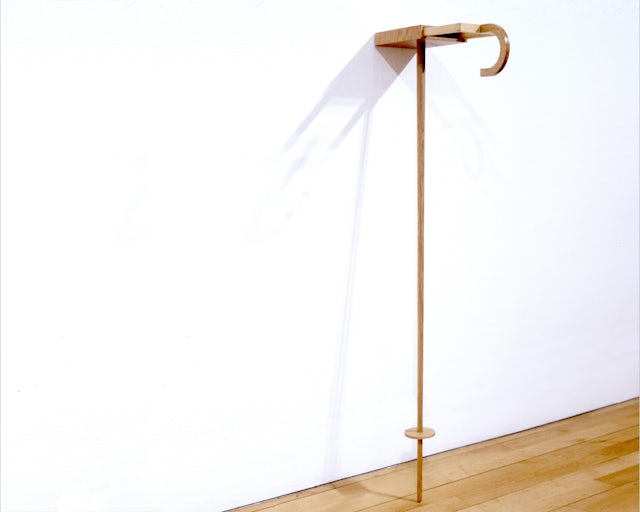
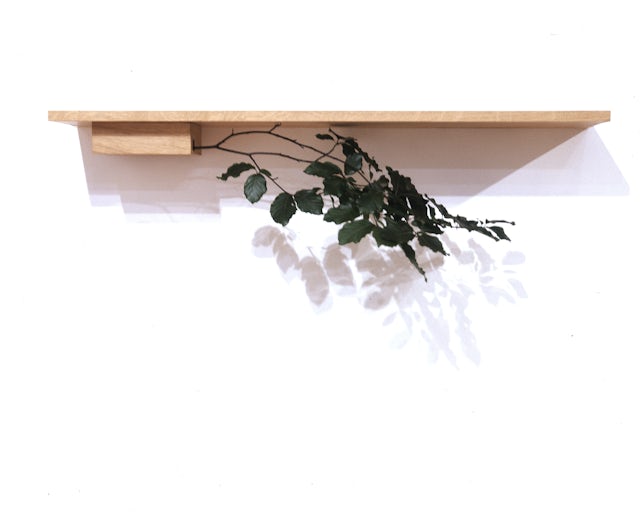




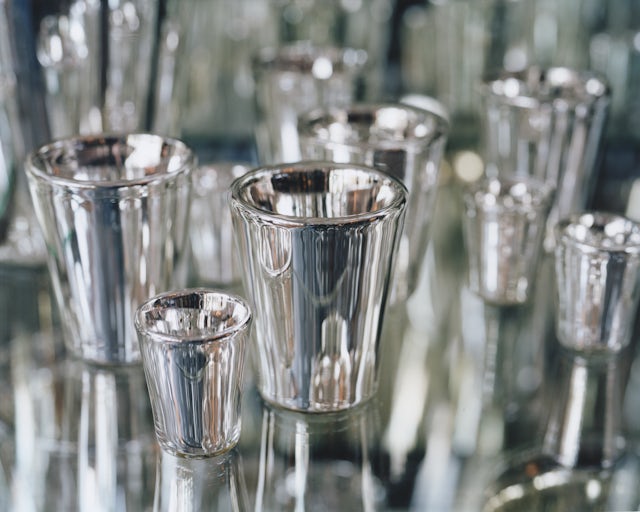
1997
MIRROR GLASSES
The family consists of an ice bucket, tumbler and shot glass made from two layers of mouth-blown glass. A silver solution is used in between the layers to mirror the glass surface and is sealed with a stainless steel disc.
The Mirror Glasses are designed to disguise the object’s contents by reflecting the environment outside, creating a surprise element. Drinkers will find that white wine or champagne appears gold, increasing the preciousness and creating delightful confusion over how full the glass is.

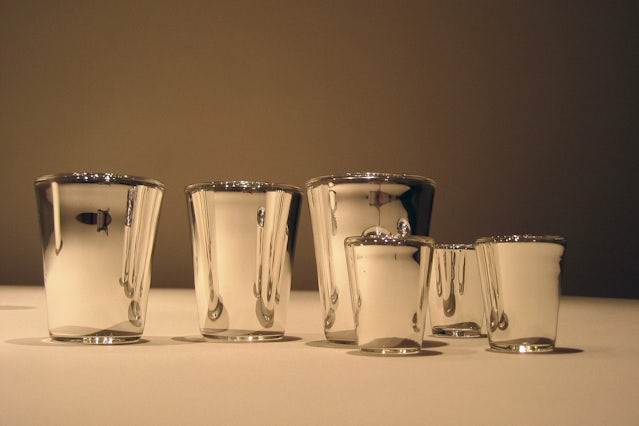
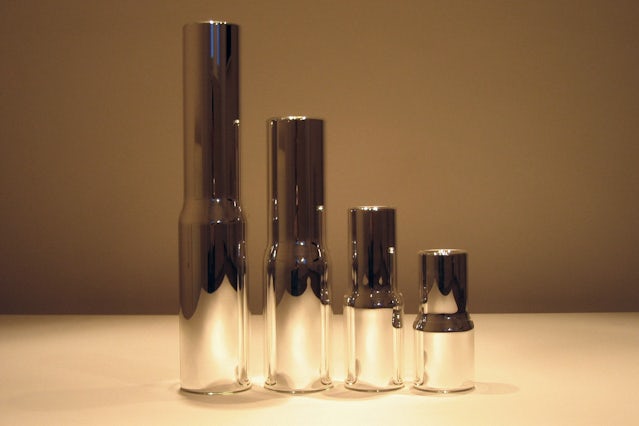

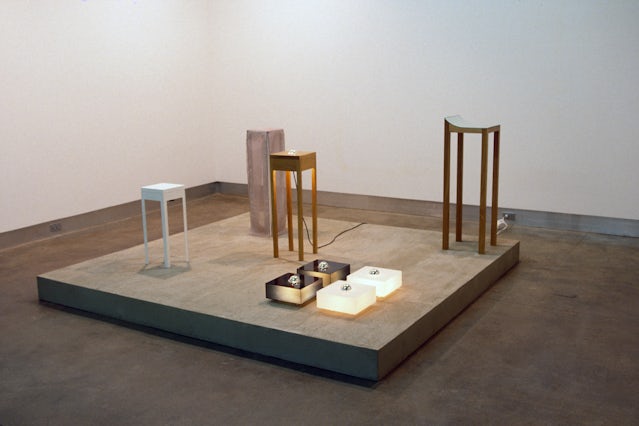
1997
OCCASIONAL TABLES
A collection of occasional tables presented as a conceptual investigation into the function of side tables.
Each of the tables – Table Light, Table Mirror, Thermometer Table, Bedside Table: Alarm Clock and Bedside Table: Weekend 1 and 2 – have a new, clear identity defined by its assisting function. The Thermometer Table, for example, is covered with a tablecloth made from a thermochromic-dyed fabric so that the table changes colour, from grey to pink, when the temperature of the room varies. And the Bedside Table: Alarm Clock features a clock underneath the lid of the tabletop, so when the alarm goes off the table starts vibrating, rocking on its uneven pairs of legs.
Ideally positioned at the entrance of a house, the Table Mirror plays with the vanity of its users. It invites them to look at themselves reflected in its curved surface, leaving the house with a distorted image. The Table Light allows a crown-silvered bulb to be screwed through a hole on its surface, projecting the light down through its hollow frame, while Bedside Table: Weekend 1 and 2 allows the user to have a good night’s sleep by placing any noisy objects inside the suspended bag underneath.
This collection exemplifies an important aspect of Michael Anastassiades’ work in the early, experimental years of his career, when he explored objects and furniture’s ability to activate a puzzling and provocative reflection on everyday behaviours.

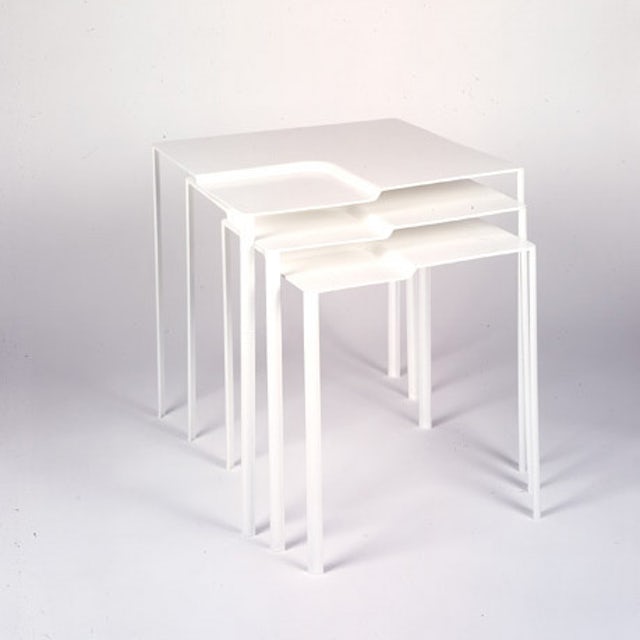
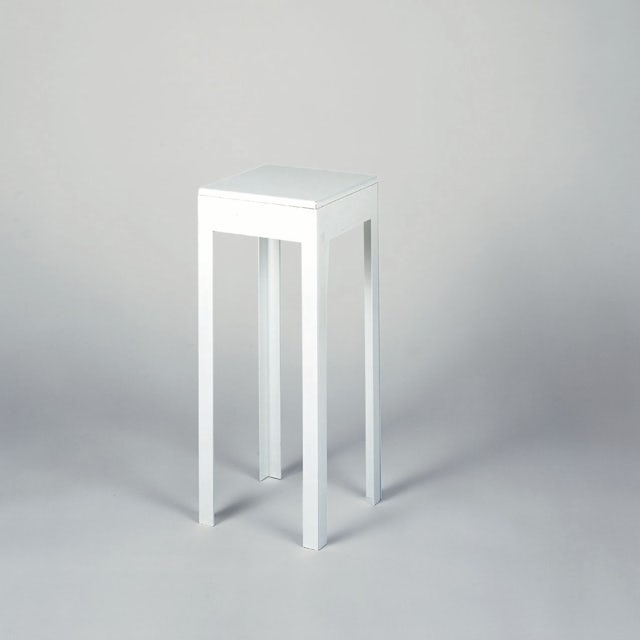
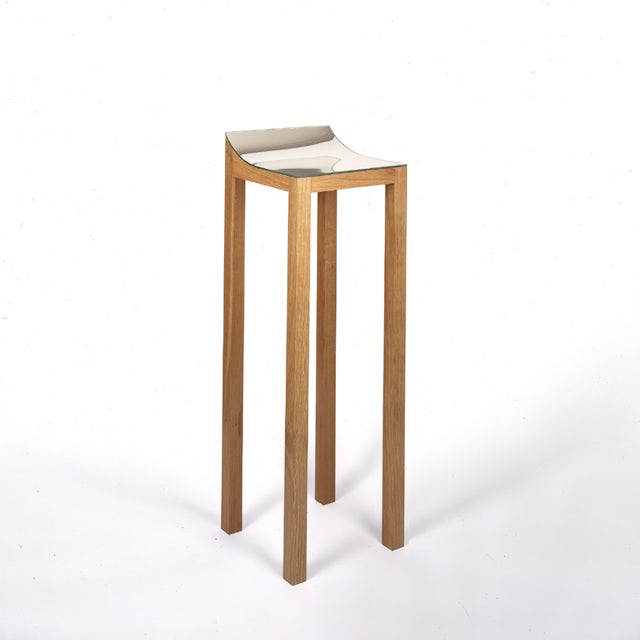
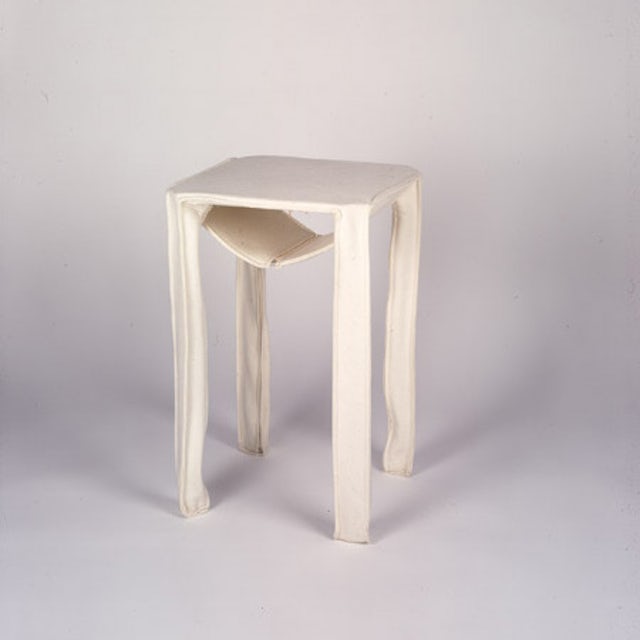
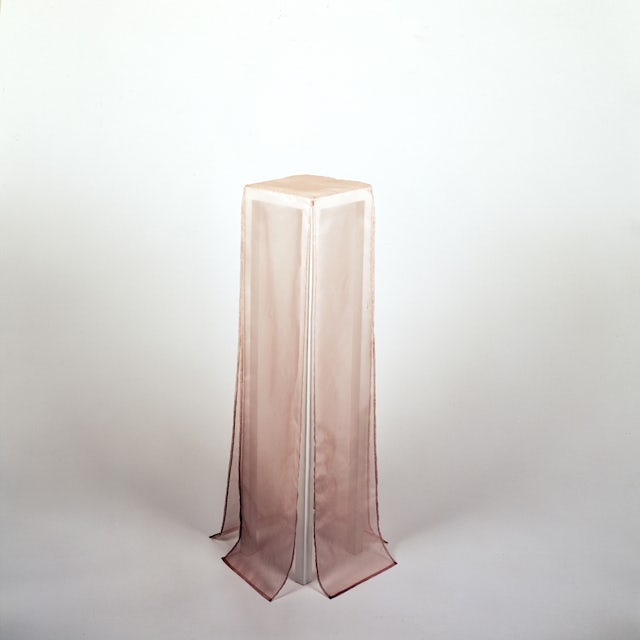
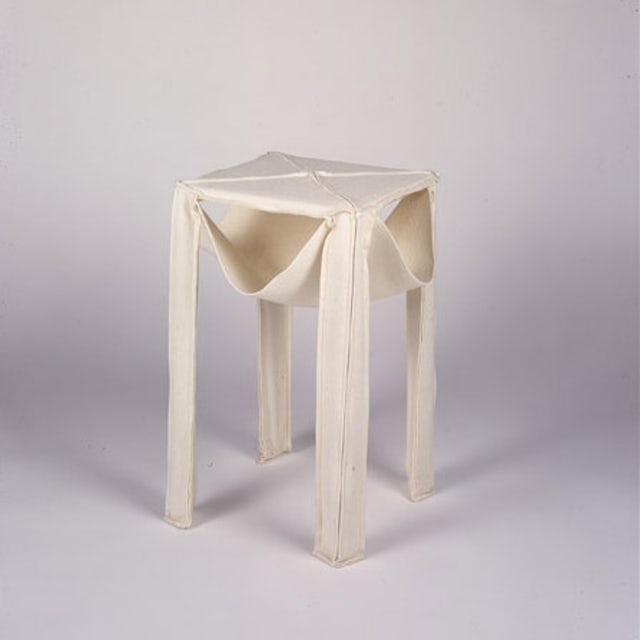

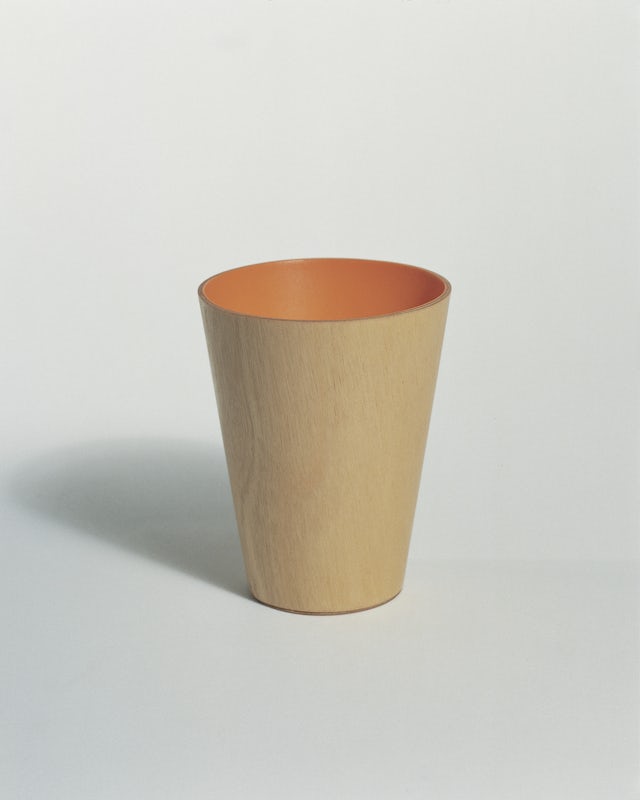
1994
MESSAGE CUPS
White and orange.
Laminated birch ply, styrene, electronics
∅80mm x 100mm
Part of the Victoria and Albert Museum Contemporary Collection
These are portable voice recording and playback devices, designed for the exchange of messages within the domestic environment. The idea is for individuals to each have a cup in which other people in the household can leave them messages. Recording and playback is done digitally via a simple gesture: turning the cup from an upright to a face-down position.

